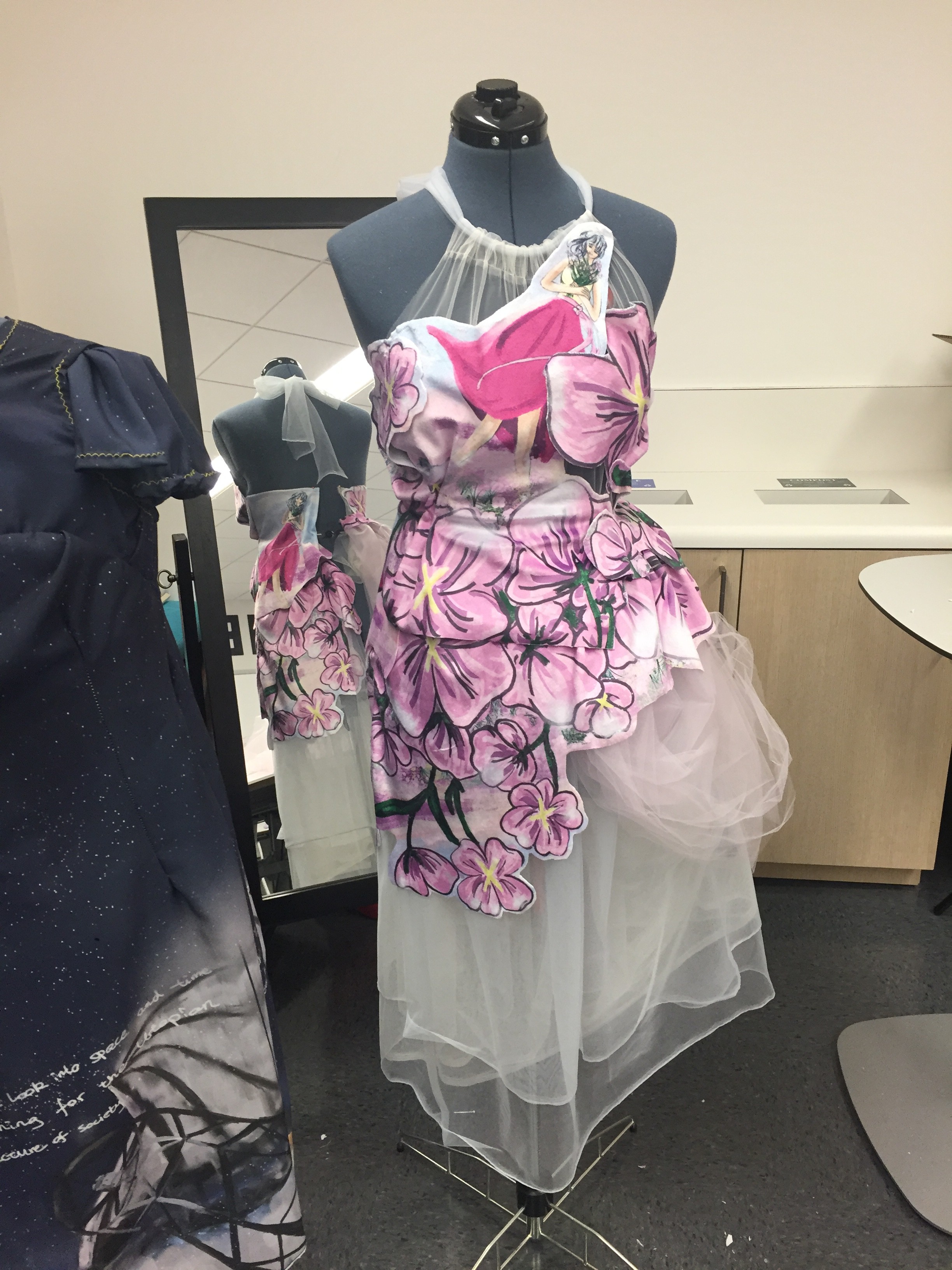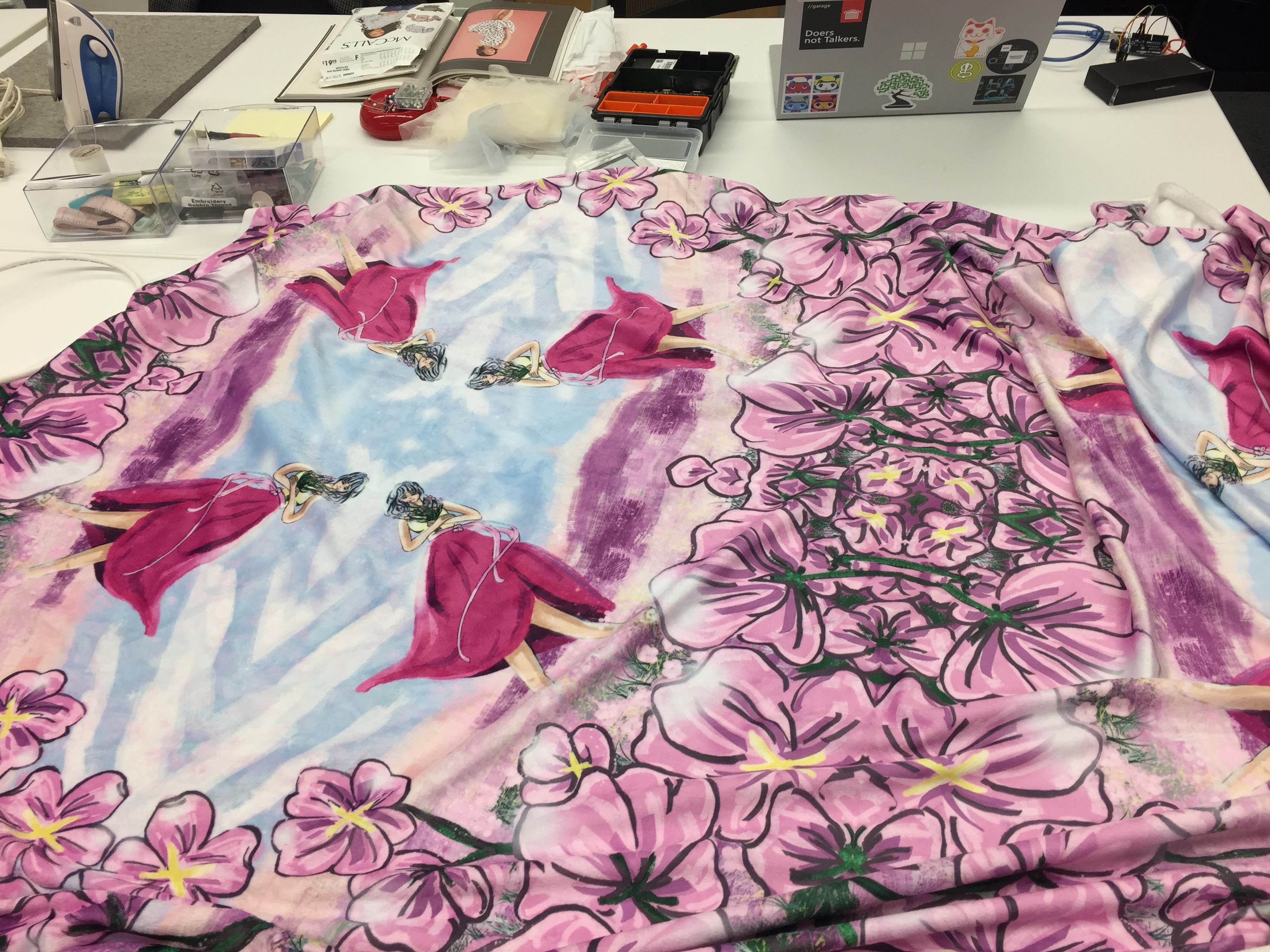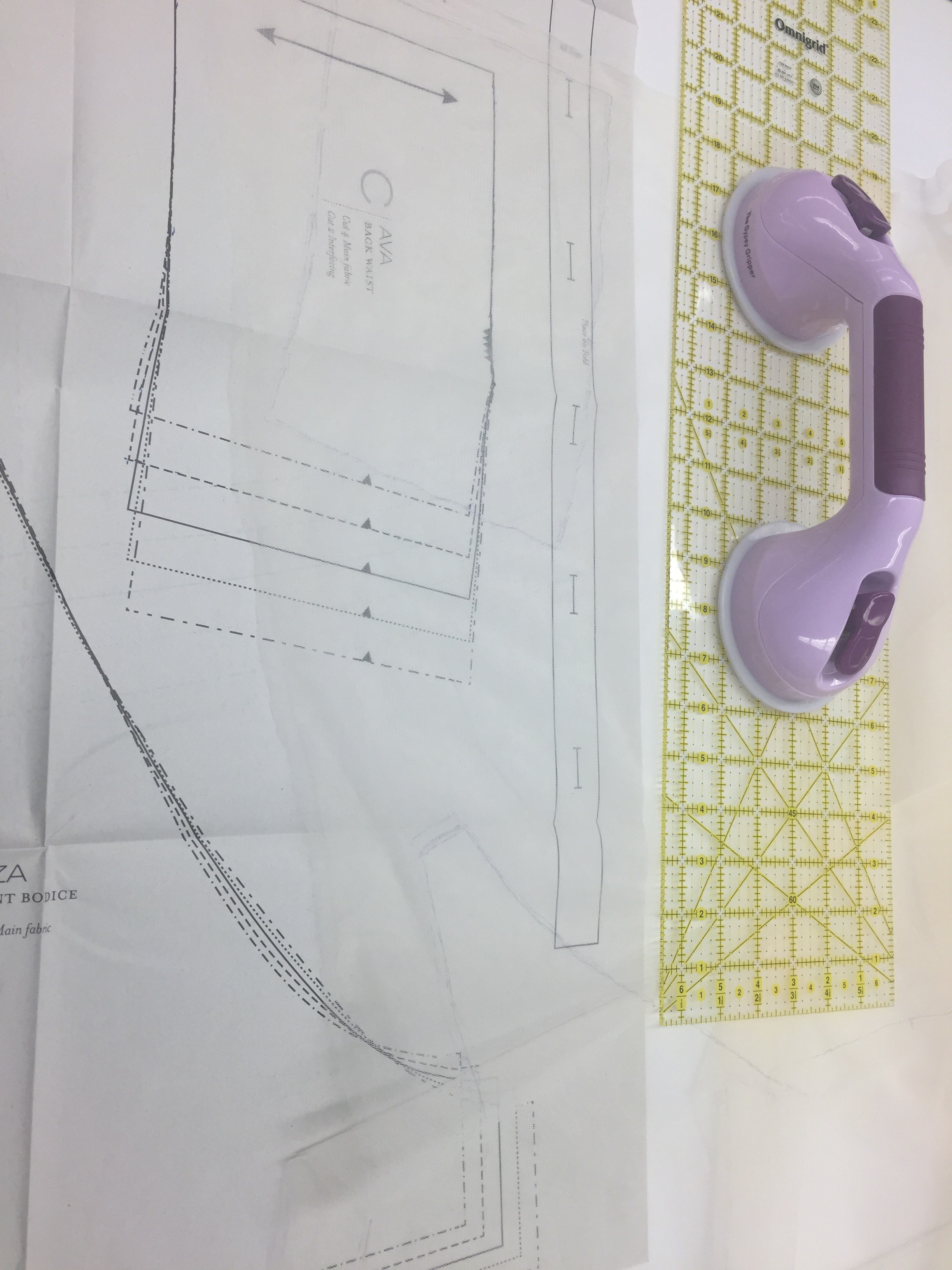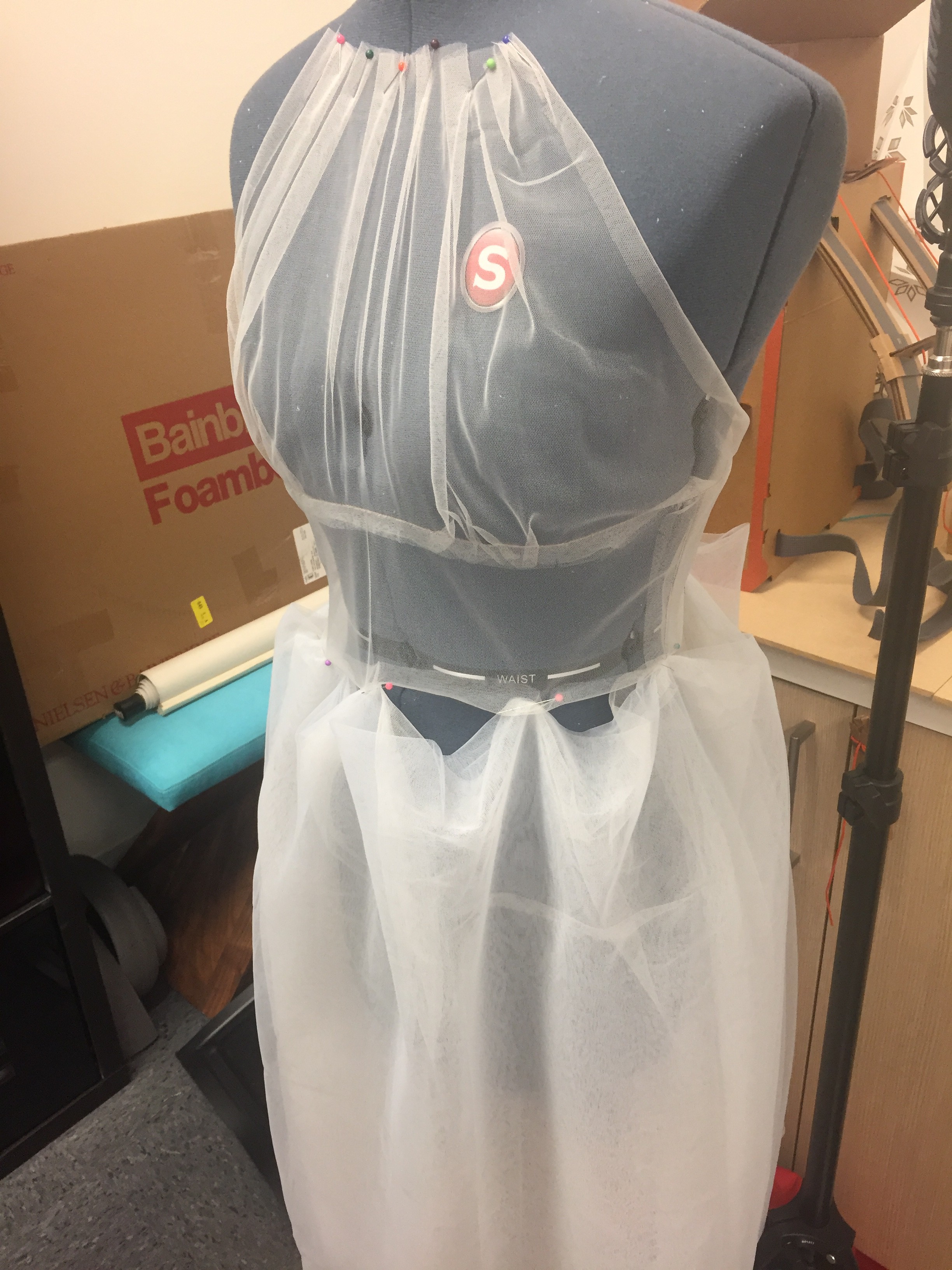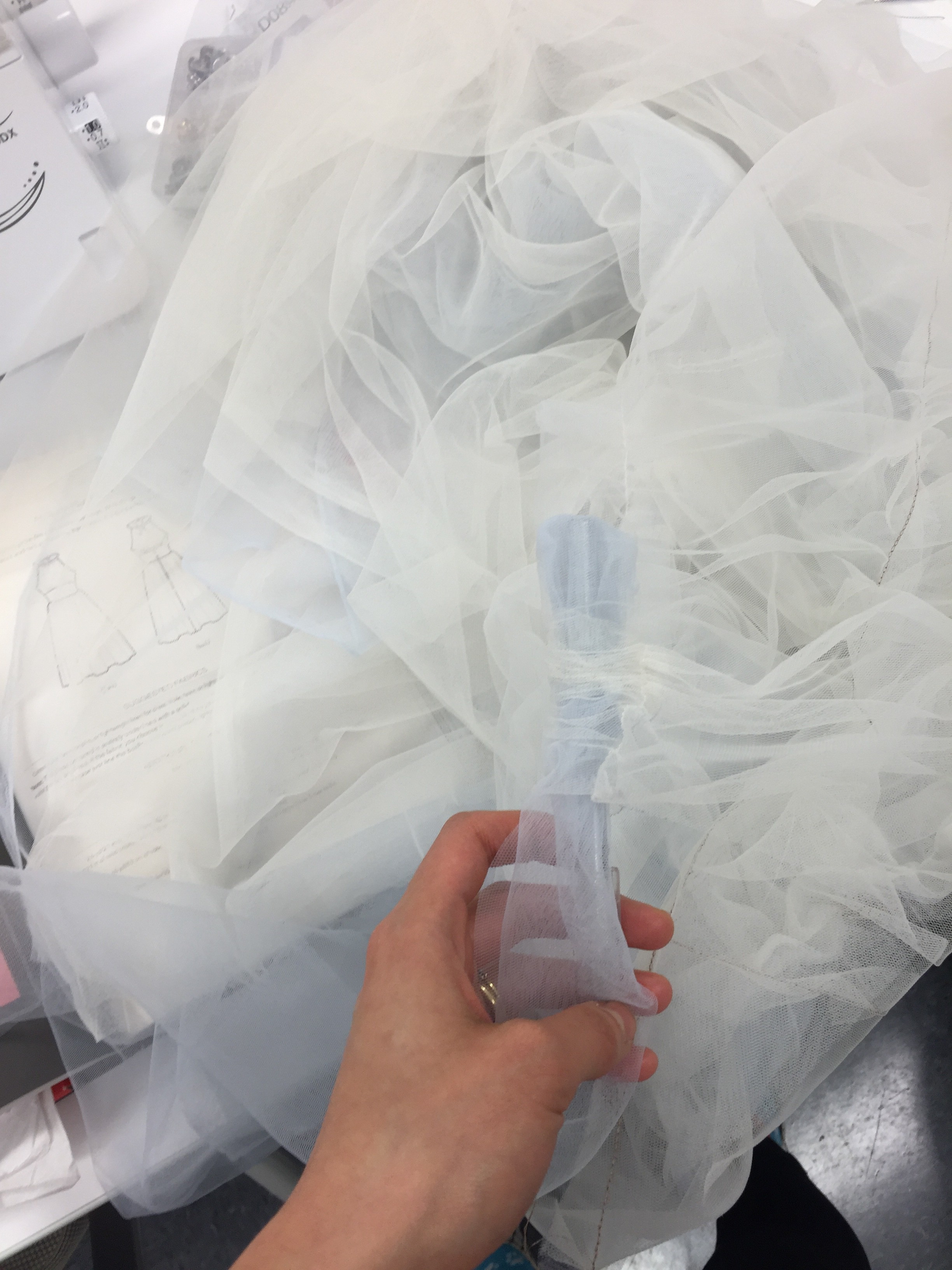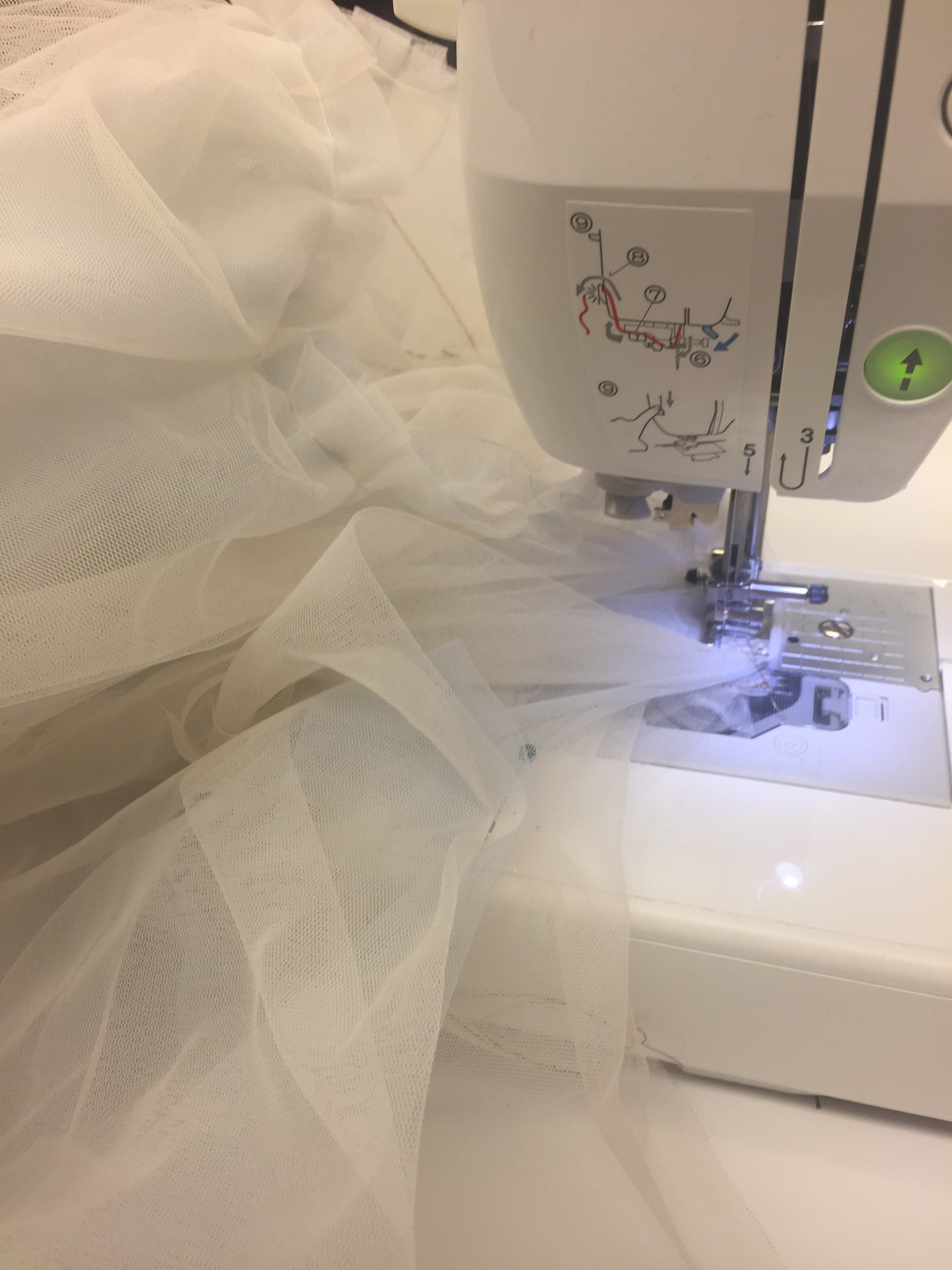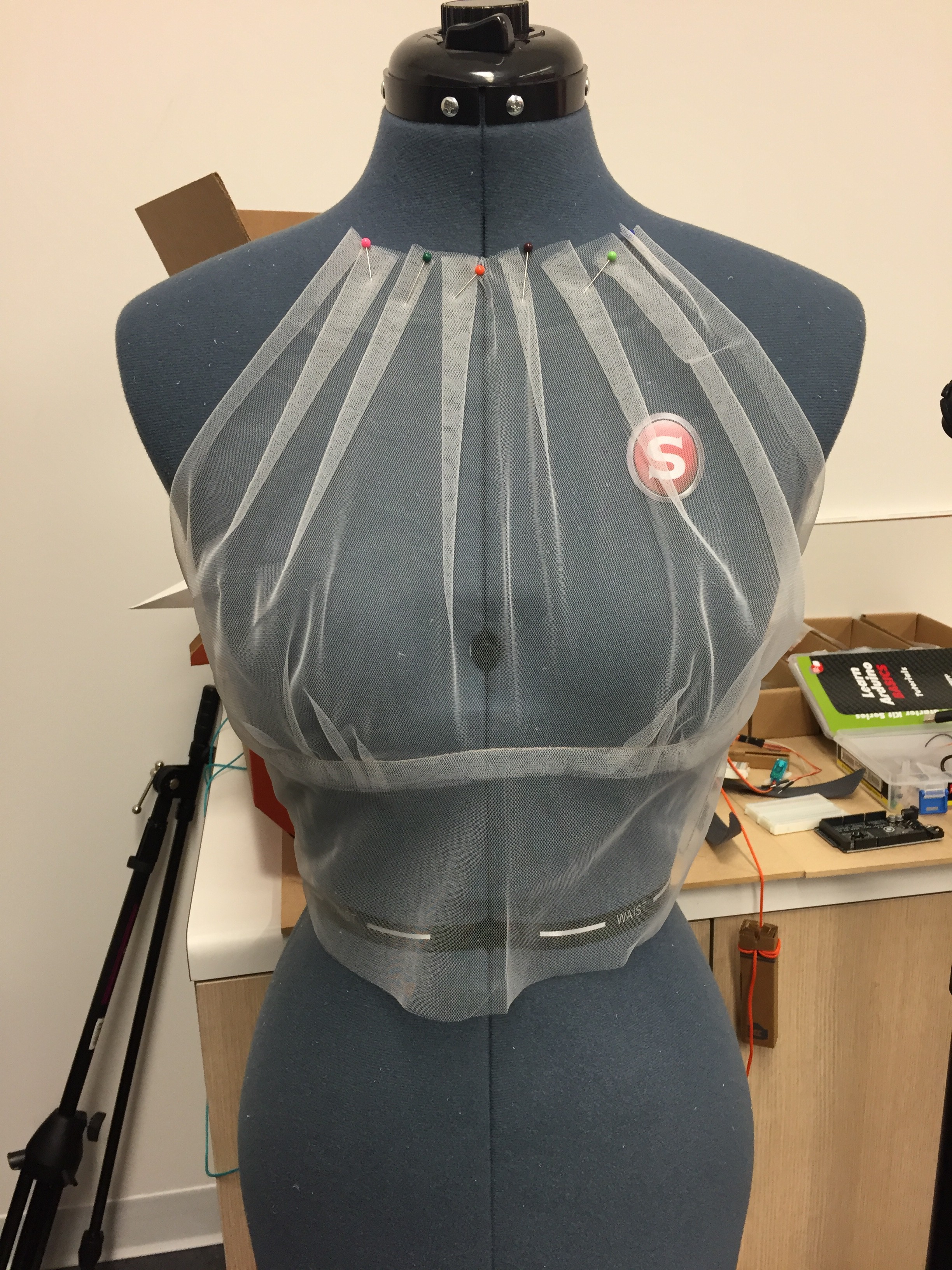-
Touch-up
12/23/2018 at 17:35 • 0 commentsI also wanted to light-up the tulle layers on the skirt with static lights. Because sometimes I may want to turn off the heart-rate-monitored LEDs so they don't constantly flash people but do want to keep some parts of the dress lit up.
For this, I used conductive tapes stuck on tulles and connected the tapes with the LEDs using conductive threads. This makes really nice soft circuits as the tapes are flexible and sticking them is much faster than sewing conductive threads.
I sewed the entire piece in between many layers of tulles to create a diffusion.
Finally, the beautiful flower decorations and the zipper!
-
Hiding the circuits
12/23/2018 at 17:23 • 0 commentsThe battery holder is a little big and heavy. It needed a pocket to be attached to the dress.
I've left gaps between the painting and base layers so that electronic components and wires can all be inserted and hidden under the painting layer.
-
Soft circuit
12/23/2018 at 17:12 • 0 commentsNow that the circuit test is working, I need to sew it up using conductive threads. But I needed to determine where to place the components before sewing them.
All the components will be sandwiched between the painting and the tulle layers, so there won't be components showing. This means there's another interfacing layer needed where the components will be sewn on. How to know where to place the components on the interfacing layer?
I taped the LEDs onto where I want them to be on based on the graphics. Then I mark the locations on a piece of paper.
I use a tulle as the interfacing layer. Since it's transparent, I can sew the LEDs on it with the paper together, therefore achieving transfer of the locations on the interfacing layer.
Sewing on tulle against a piece of paper is also a technique I used for the Twinkle Nail project. As tulles are very flimsy, the paper helps create rigidity. Peeling off the paper afterwards give a very nice flexible circuit.
Because tulles are porous (and the base layer is also made of tulle), the conductive thread may touch my skin. This may short the circuit. So I added another fabric to isolate the circuit from my skin.
Now, you can insert the soft circuit in between the painting and base layers.
-
Heart-rate monitor
12/23/2018 at 16:54 • 0 commentsI wanted to use a pulse sensor that is small so I can attach it to my earlobe as an earring. But the reading was not stable and the pulse shape doesn't make sense.
So I changed to an analog ECG heart-rate monitor and it worked beautifully.
You have to attach the electros to three points on your body.
I used the same code from the pulse sensor and adjusted the target rate according to the output EKG displayed on the serial plotter.
Note, I used the Arduino Nano board on CrazyCircuits. It needs the Old ATmega328P Bootloader.
-
LED test
12/23/2018 at 16:32 • 0 commentsI got some components from CrazyCircuits, including these large LEDs and coin ceil holders with large holes for sewing. They also have conductive tapes and a testing board, making the circuit test very easy.
I even used them to test a different project I'm working on that needed an external power supply.
I always test how thinks would look before construction. The LEDs should shine through the fabric. This is not the actual placement. I just needed to see how bright they show up.
-
Graphic placement
12/23/2018 at 16:15 • 0 commentsNow I need to design the placement of the graphics. I decided to cut the flowers and human figure out according to their shapes. Then stitch the parts together onto the tulle layer piece by piece.
There's a lot of manual work.
-
Base Layer
12/23/2018 at 16:05 • 0 commentsI painted my favorite flowers that are outside our apartment complex and printed it onto Minki fabric. The fabric is very smooth and soft. I wanted to make it into a dress based on the painting.
The first step is to make a base layer. I made a halter dress using tulle cut out of a pattern.
I love tulle and ribbons, especially when they are transparent.
Flowers - Arduino Nano, CrazyCircuits, DFRobot
A dress with my painting of flowers on the fabric; fireflies in the flowers blink according to wearer's heart-rate.
 artbyphysicistkitty
artbyphysicistkitty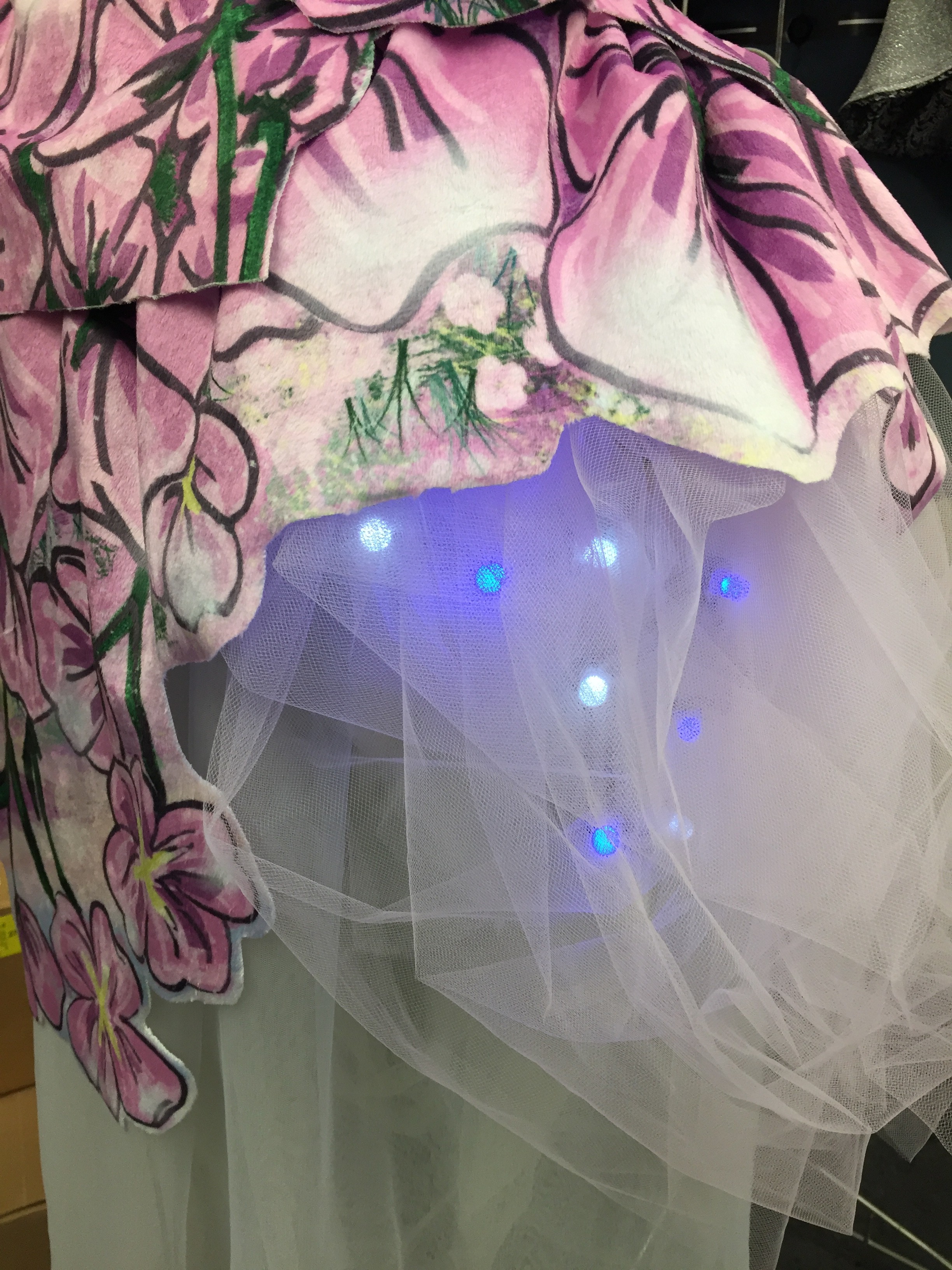
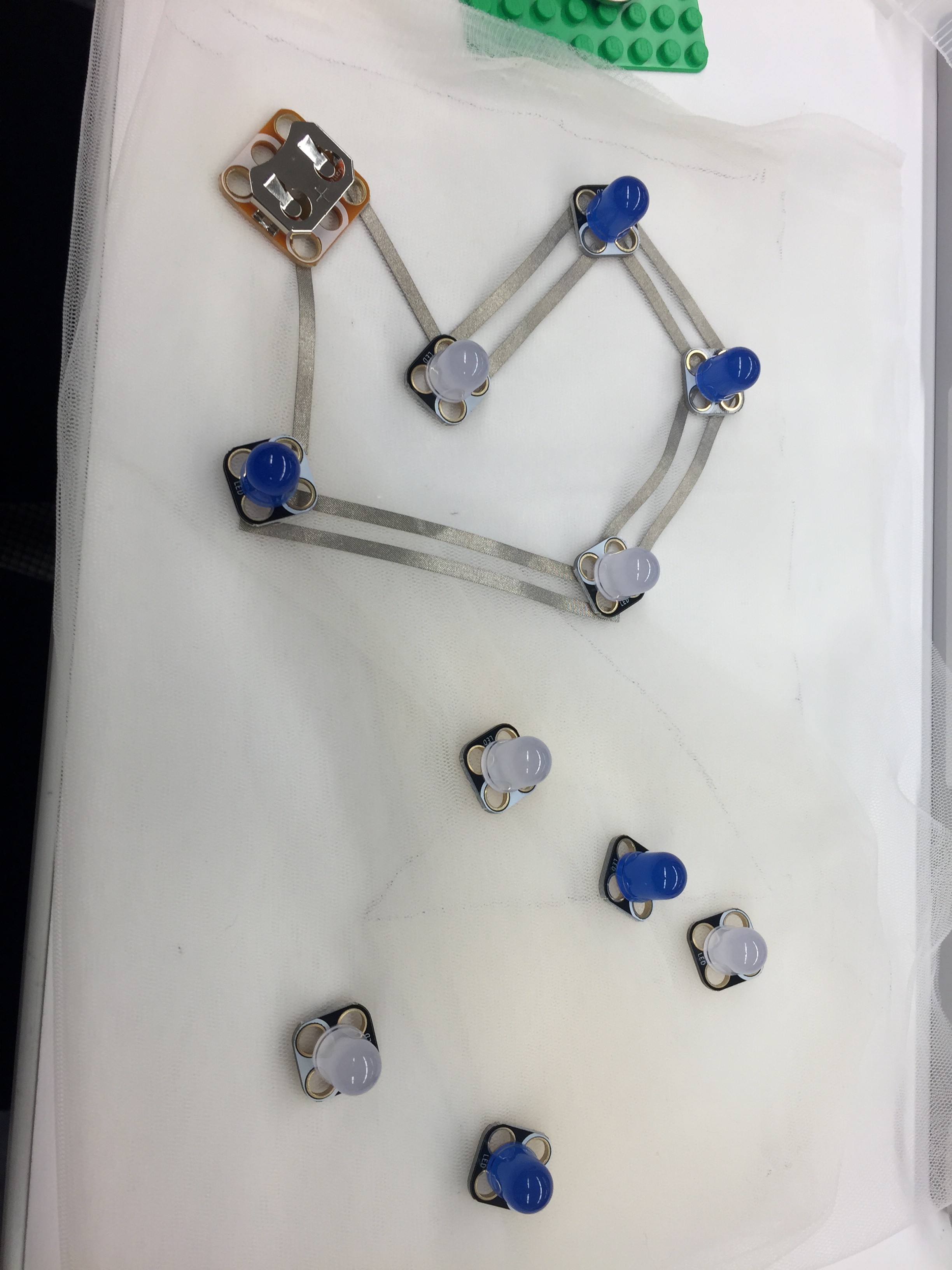
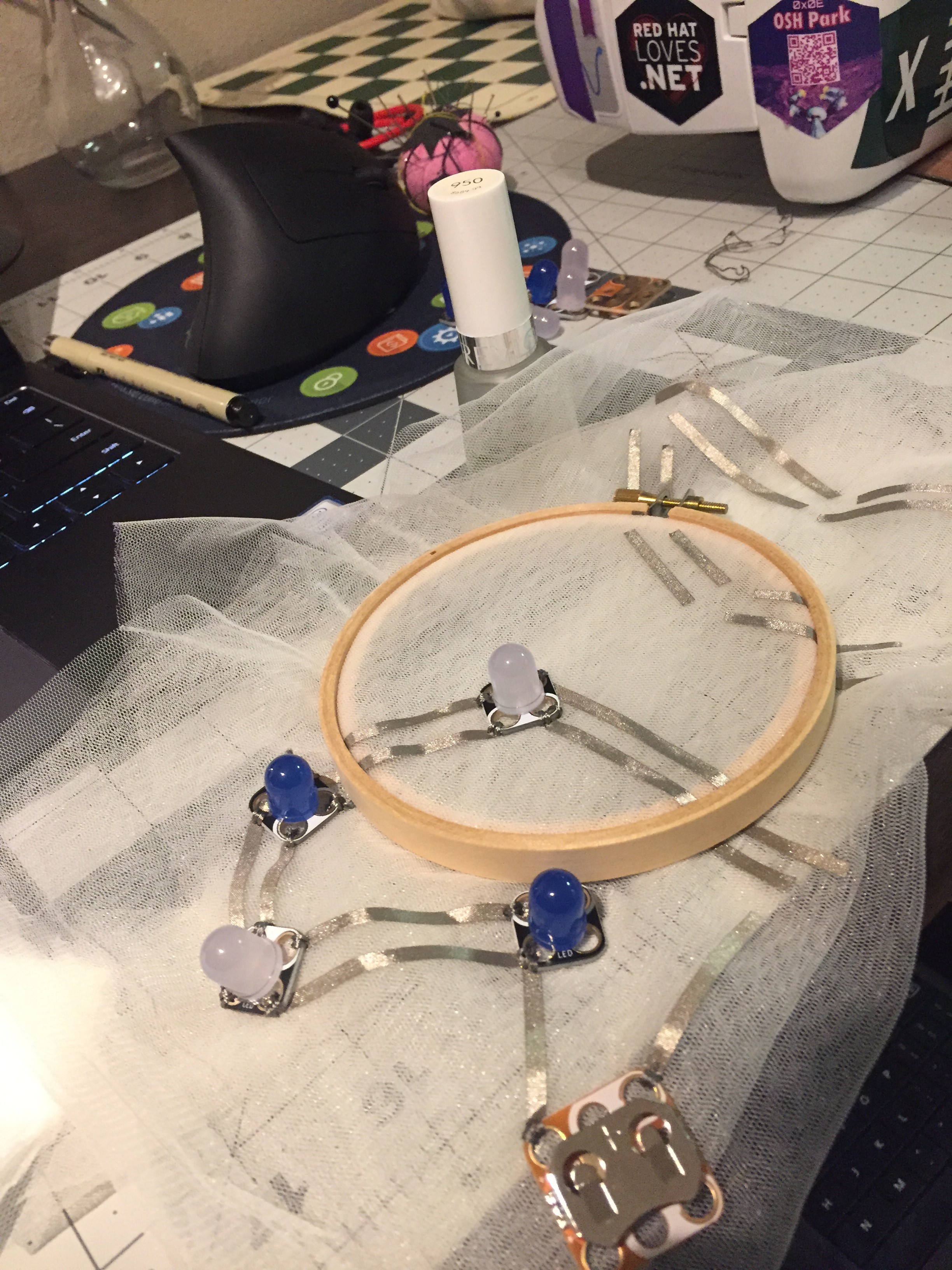
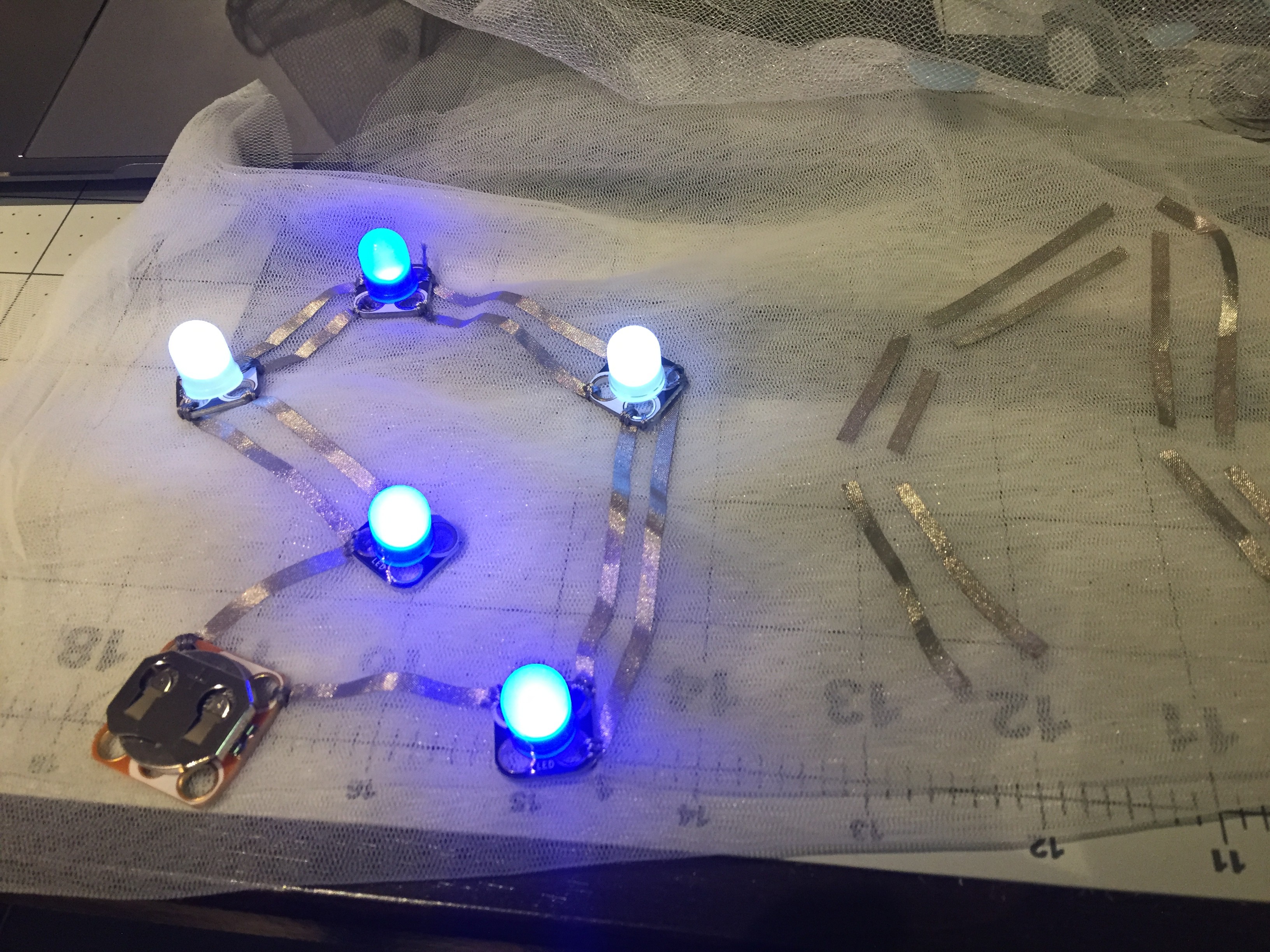
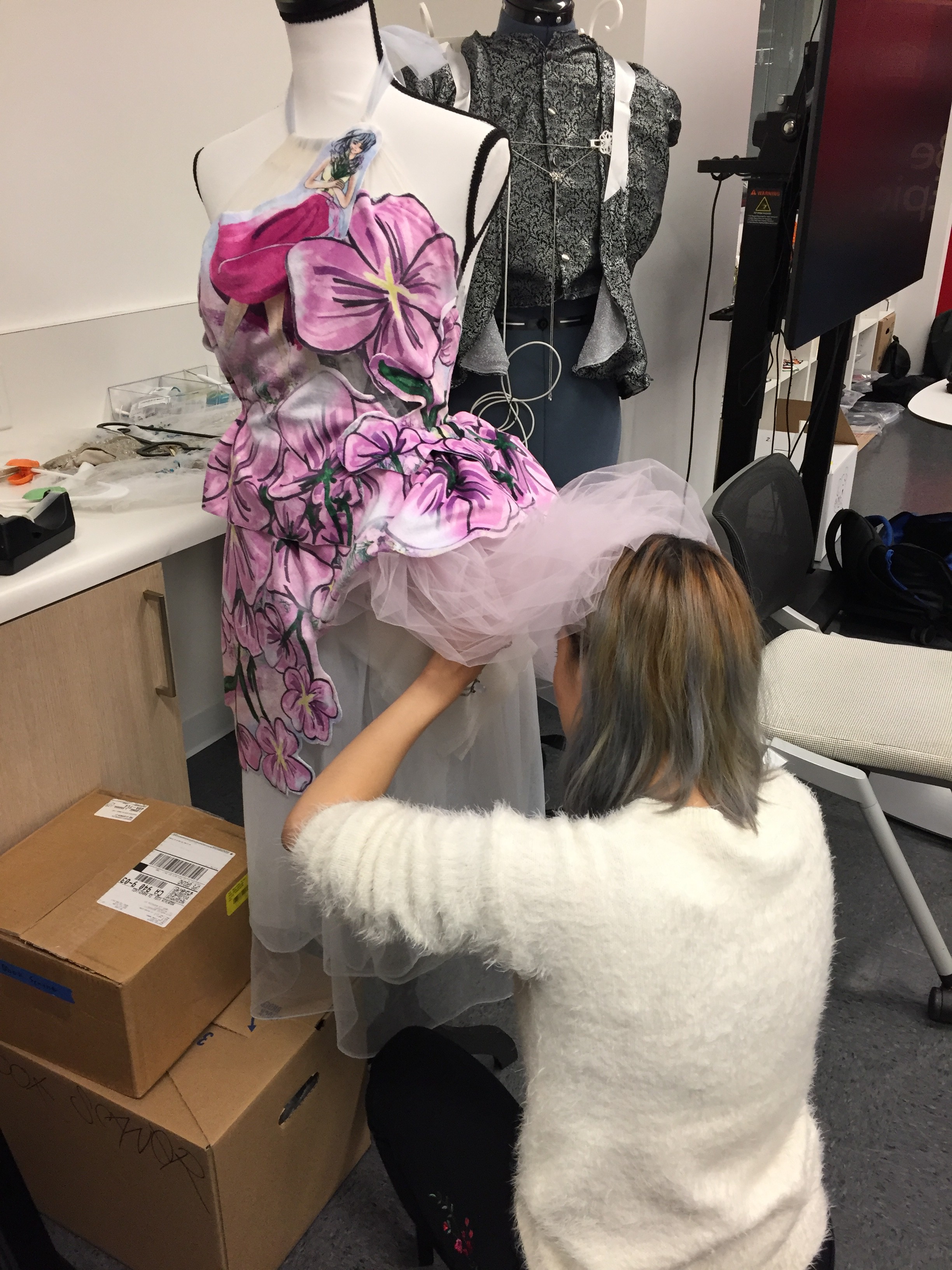
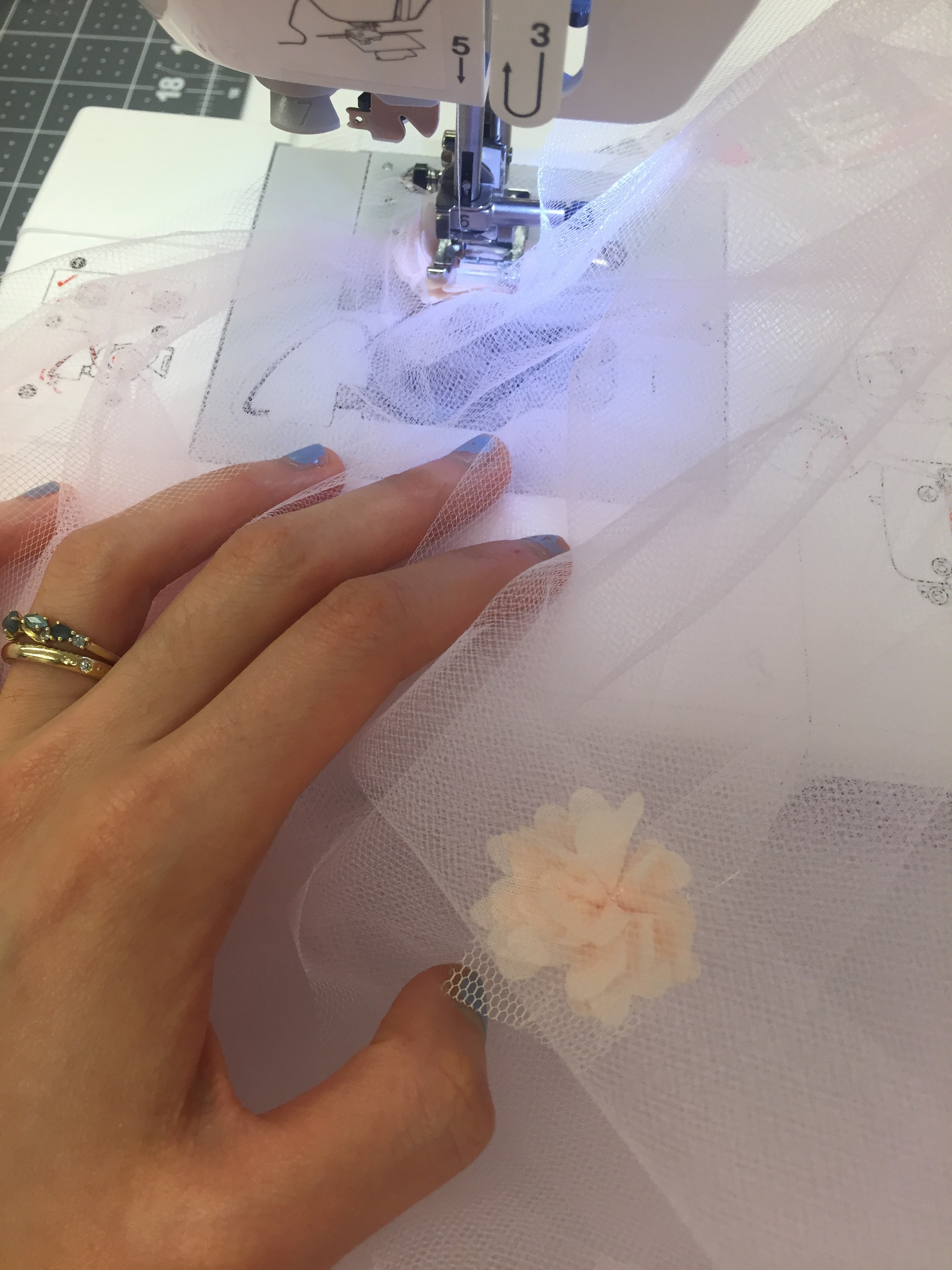
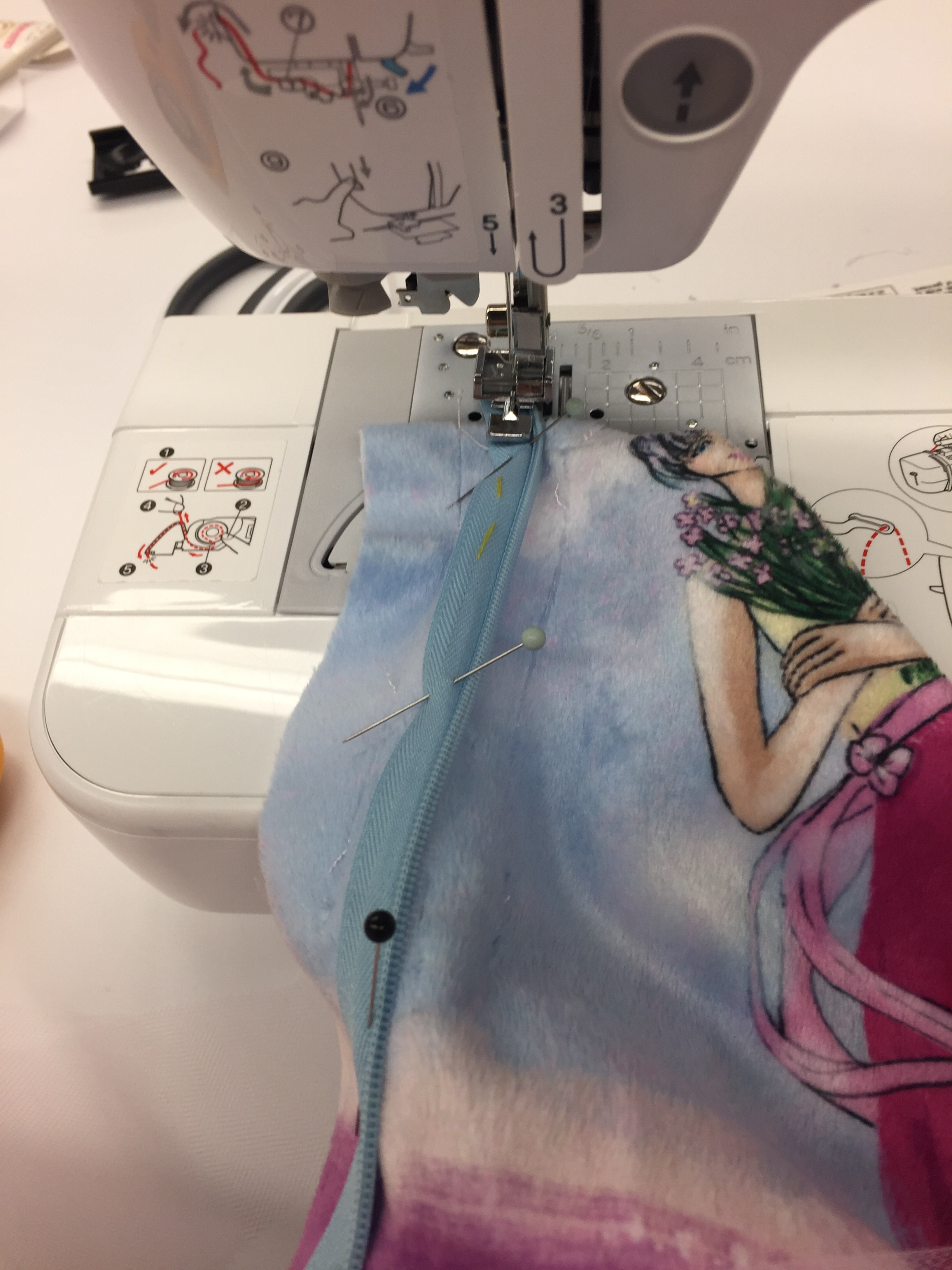
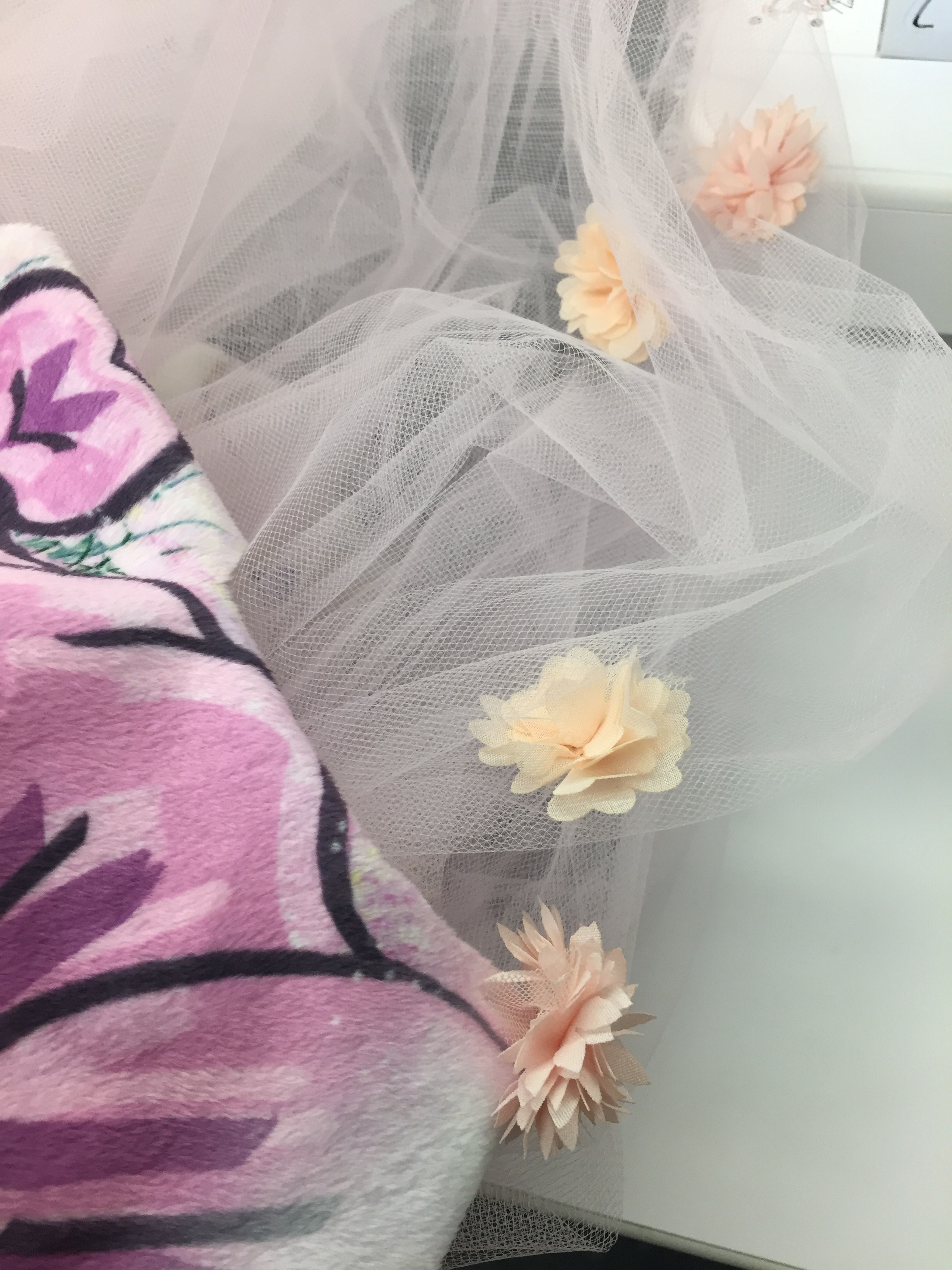
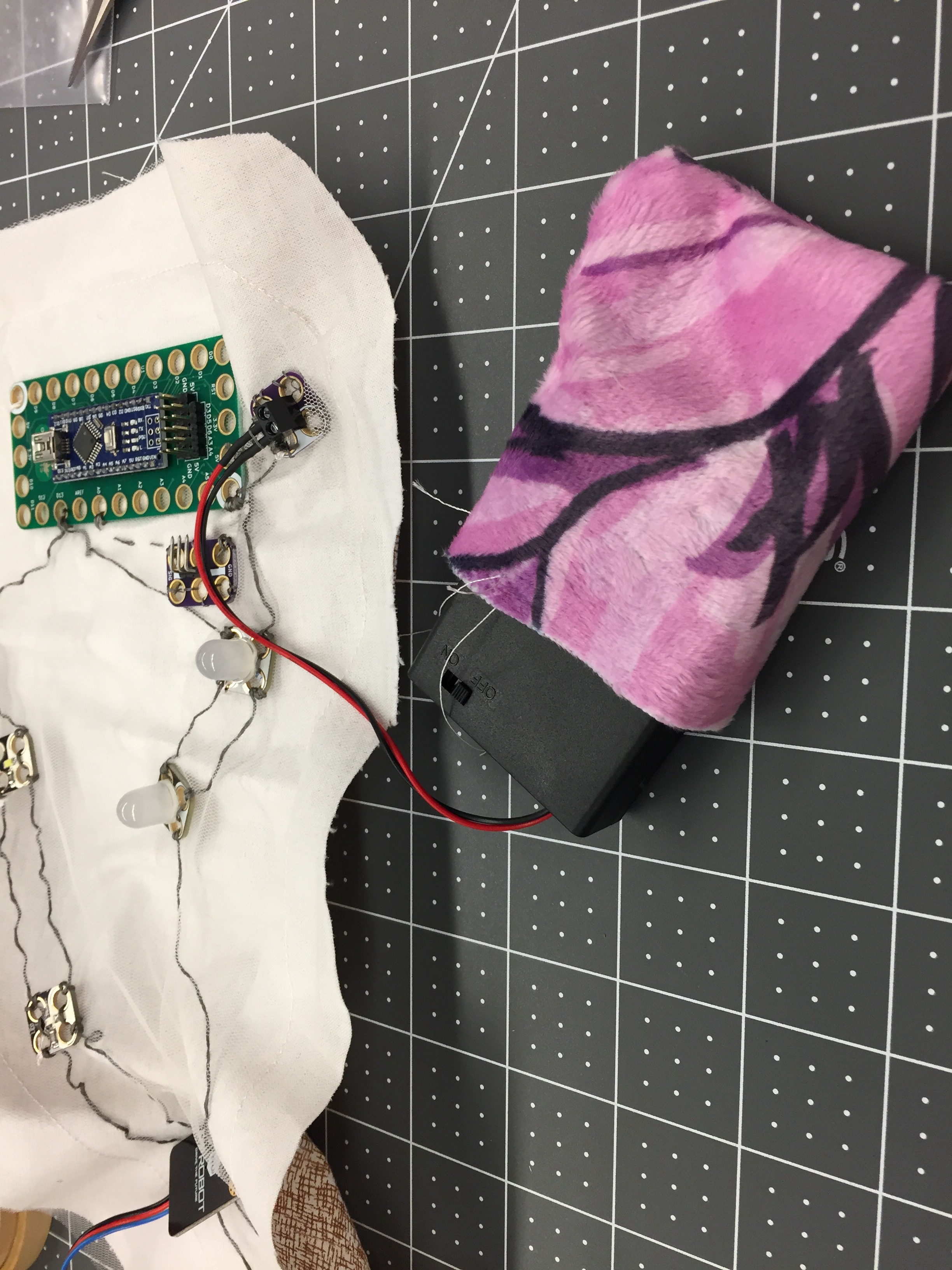 The battery holder is a little big and heavy. It needed a pocket to be attached to the dress.
The battery holder is a little big and heavy. It needed a pocket to be attached to the dress.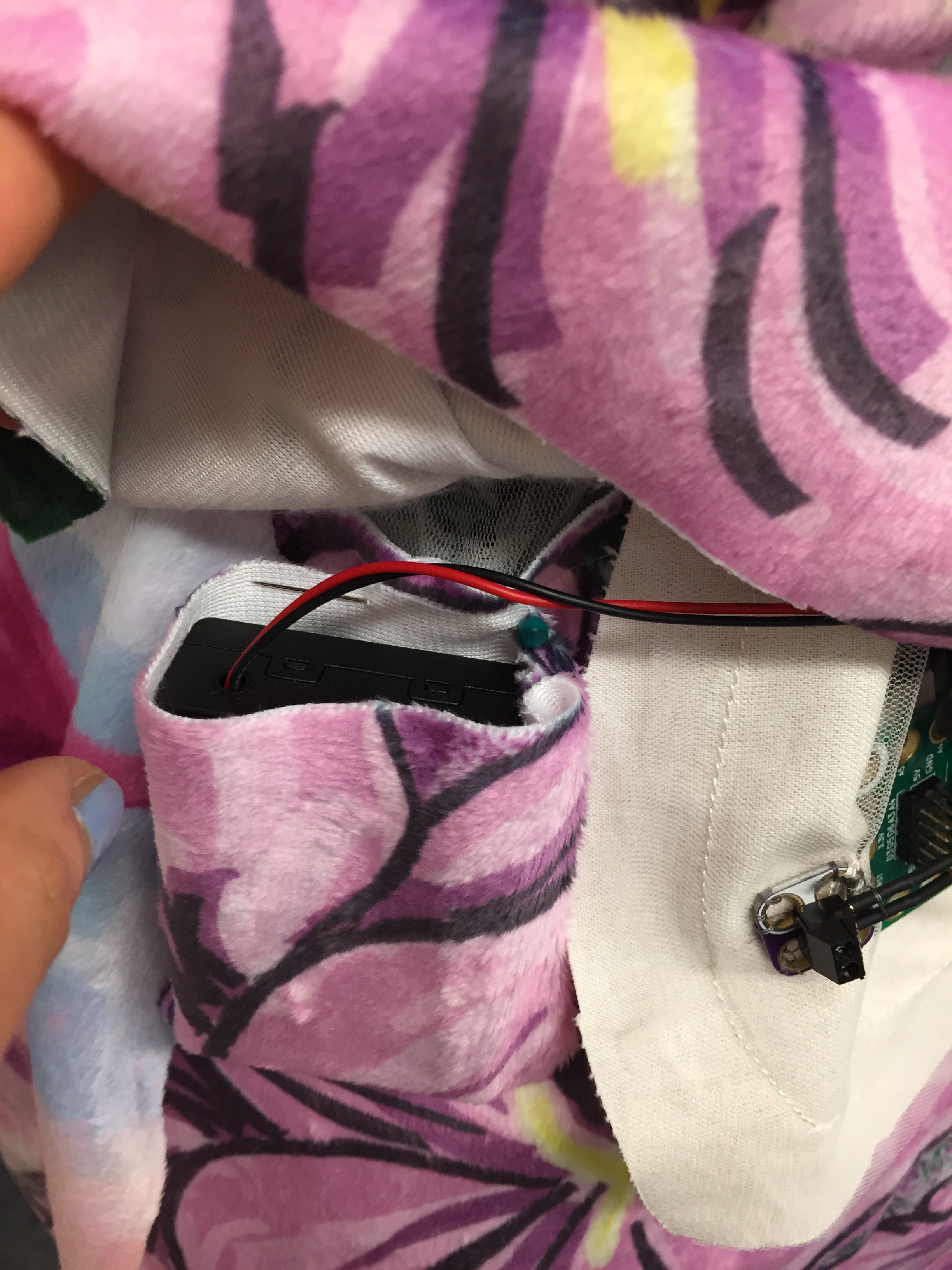 I've left gaps between the painting and base layers so that electronic components and wires can all be inserted and hidden under the painting layer.
I've left gaps between the painting and base layers so that electronic components and wires can all be inserted and hidden under the painting layer.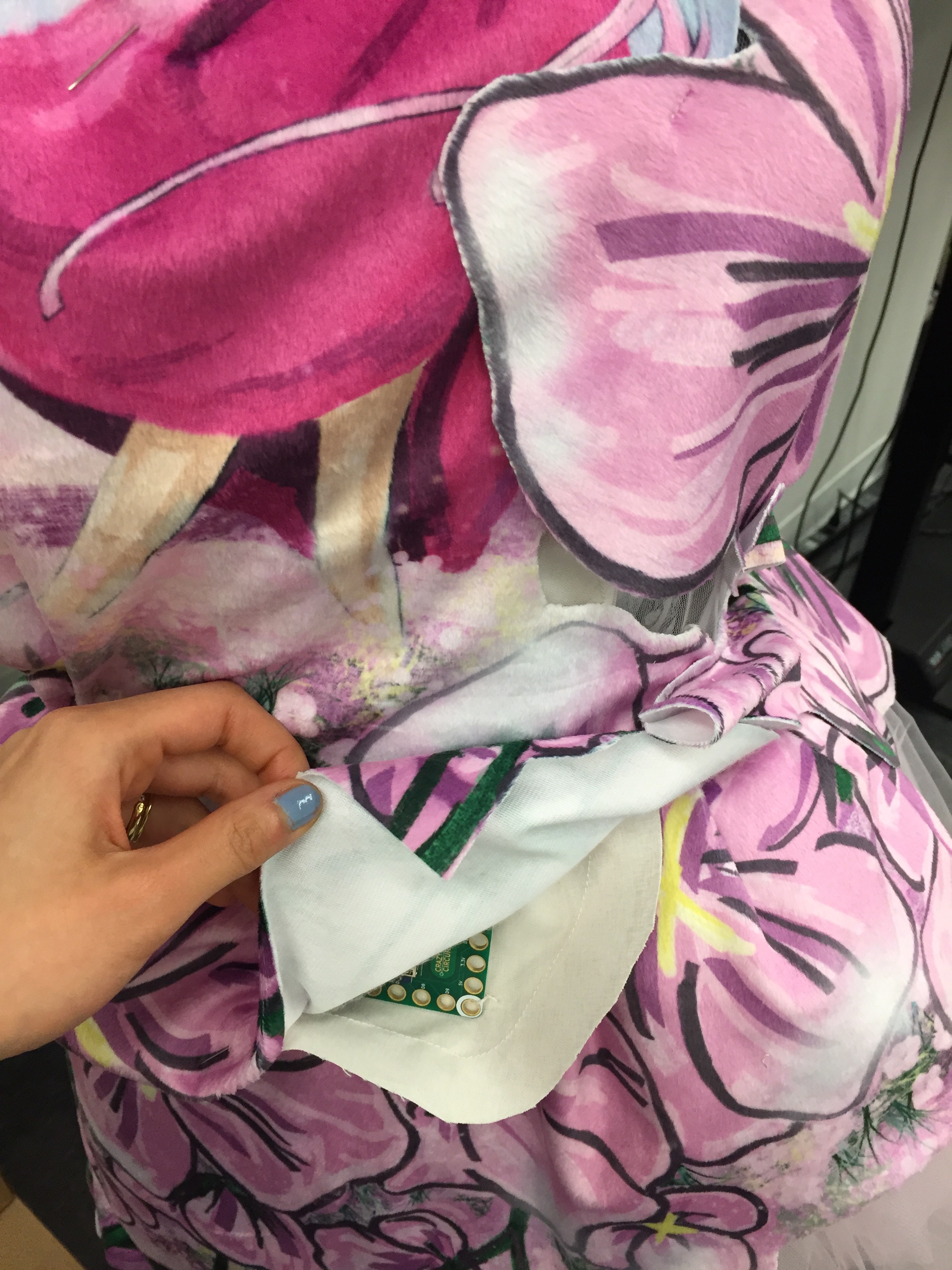
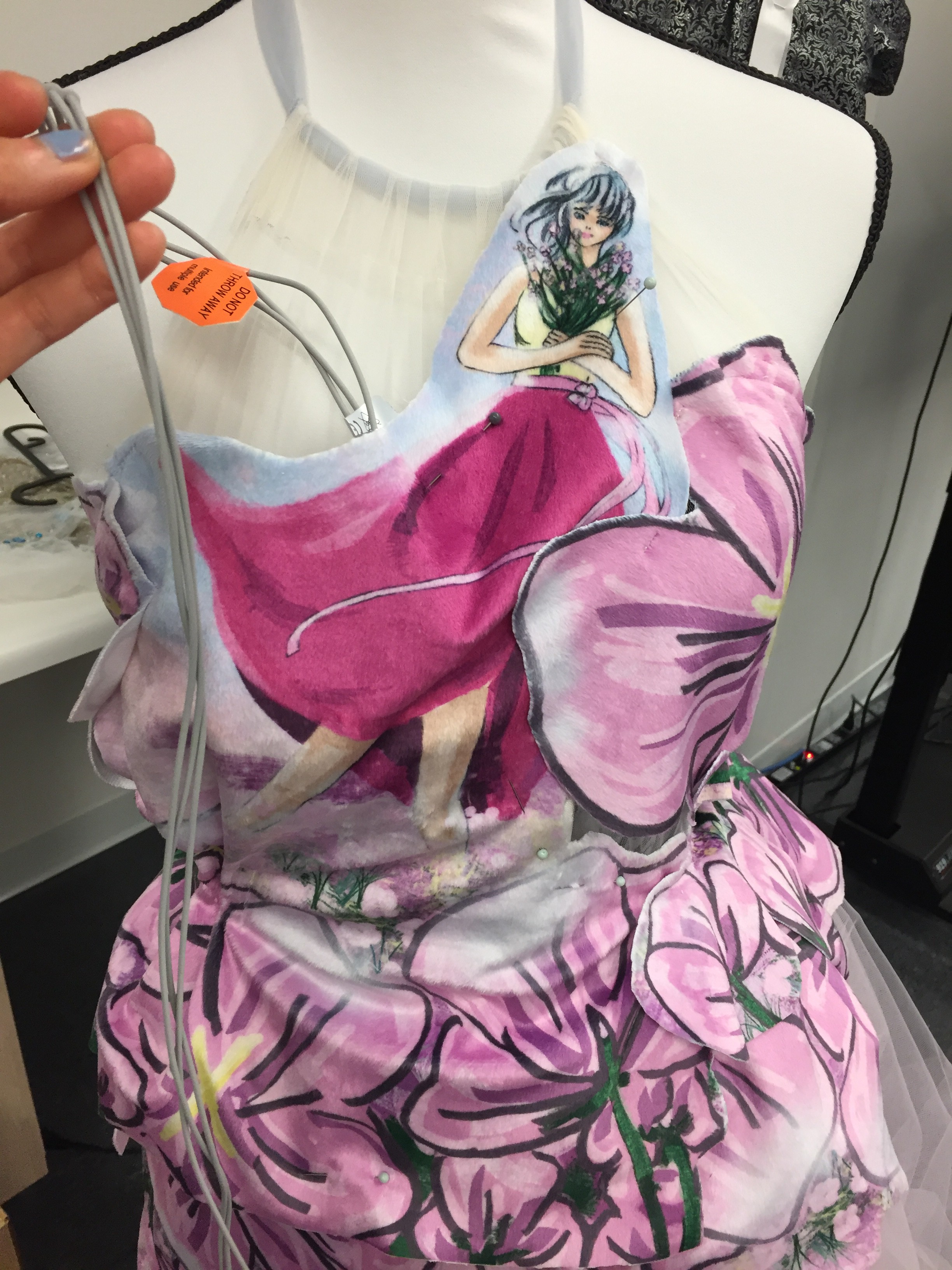
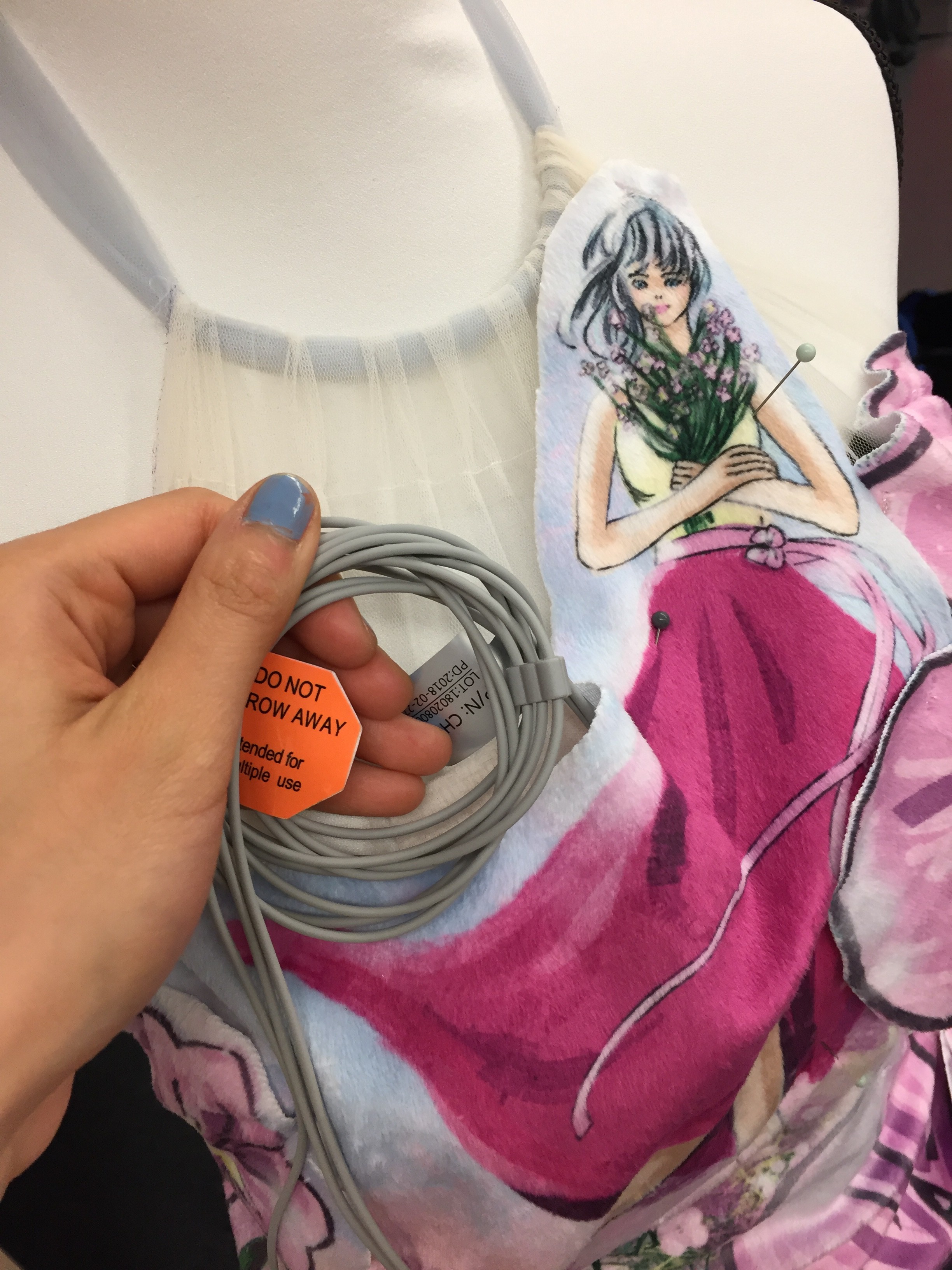
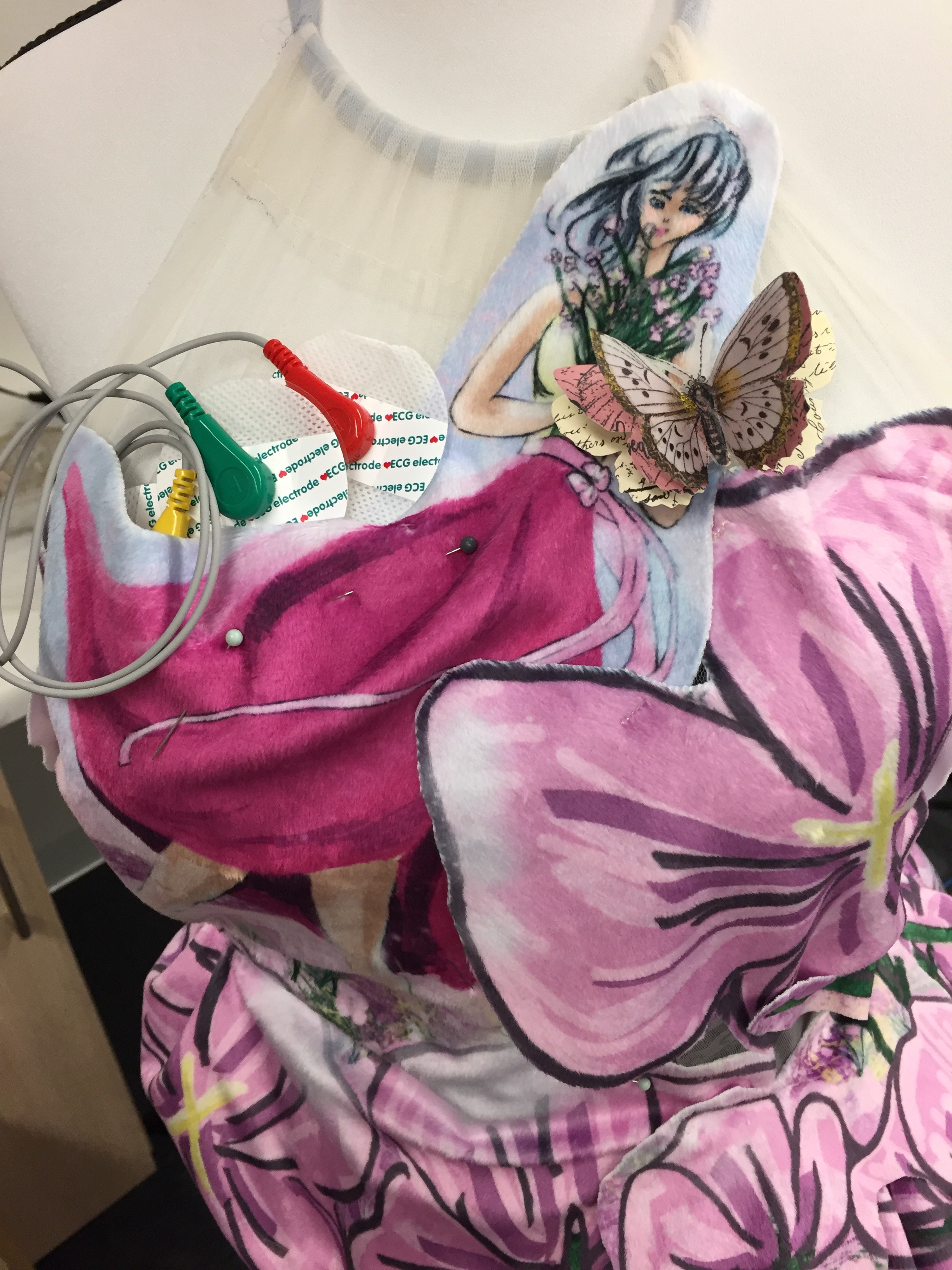
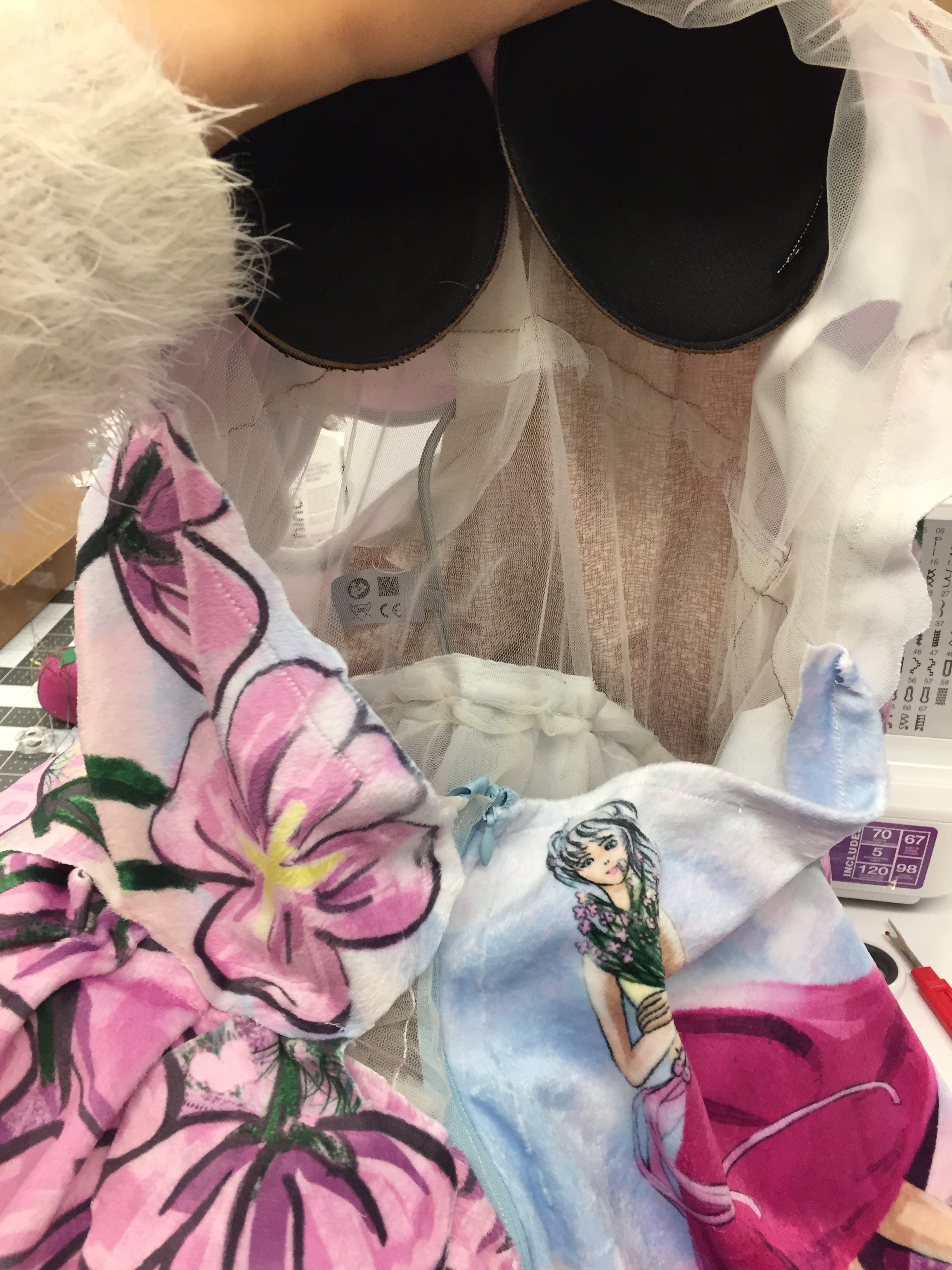
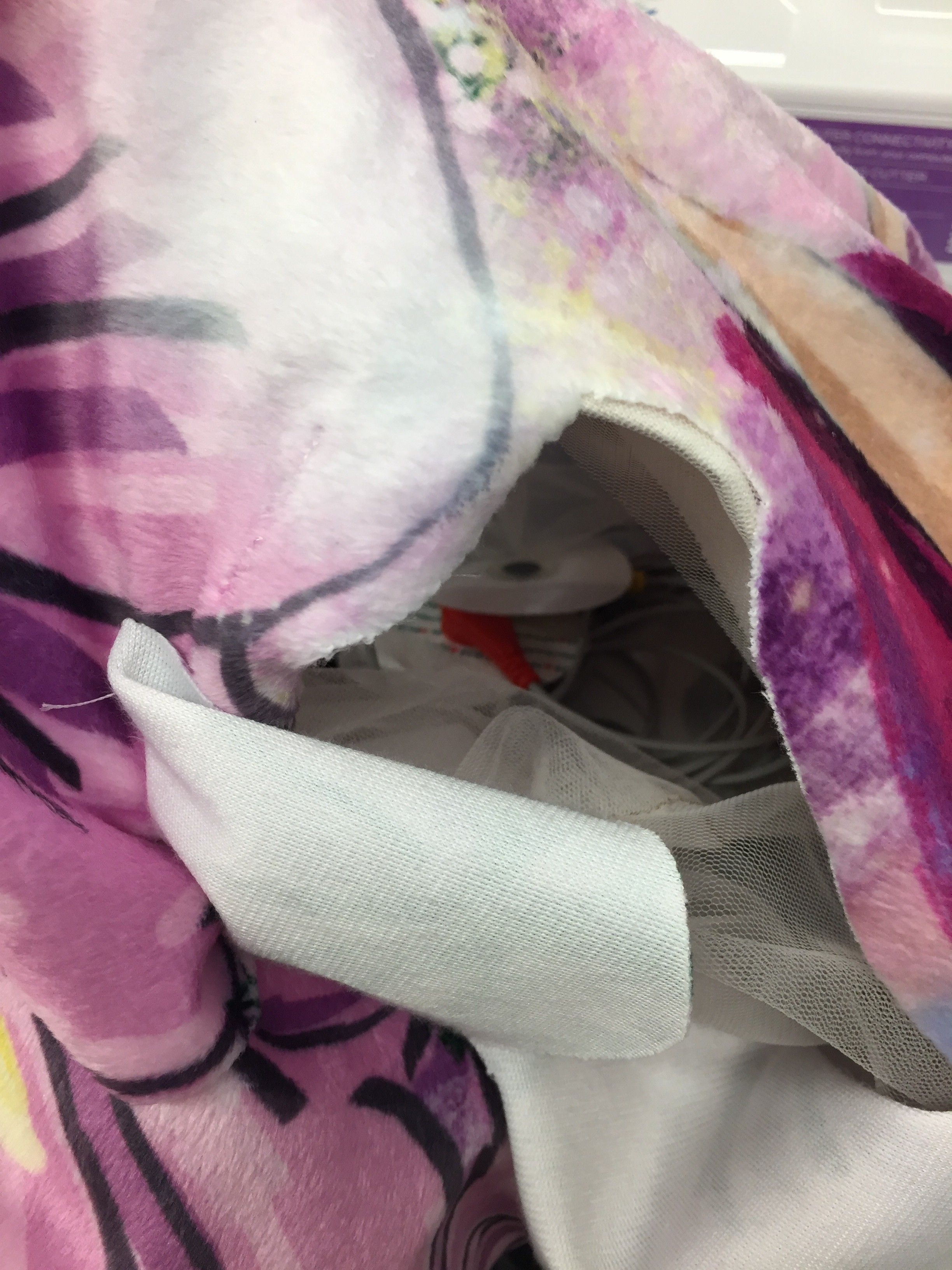
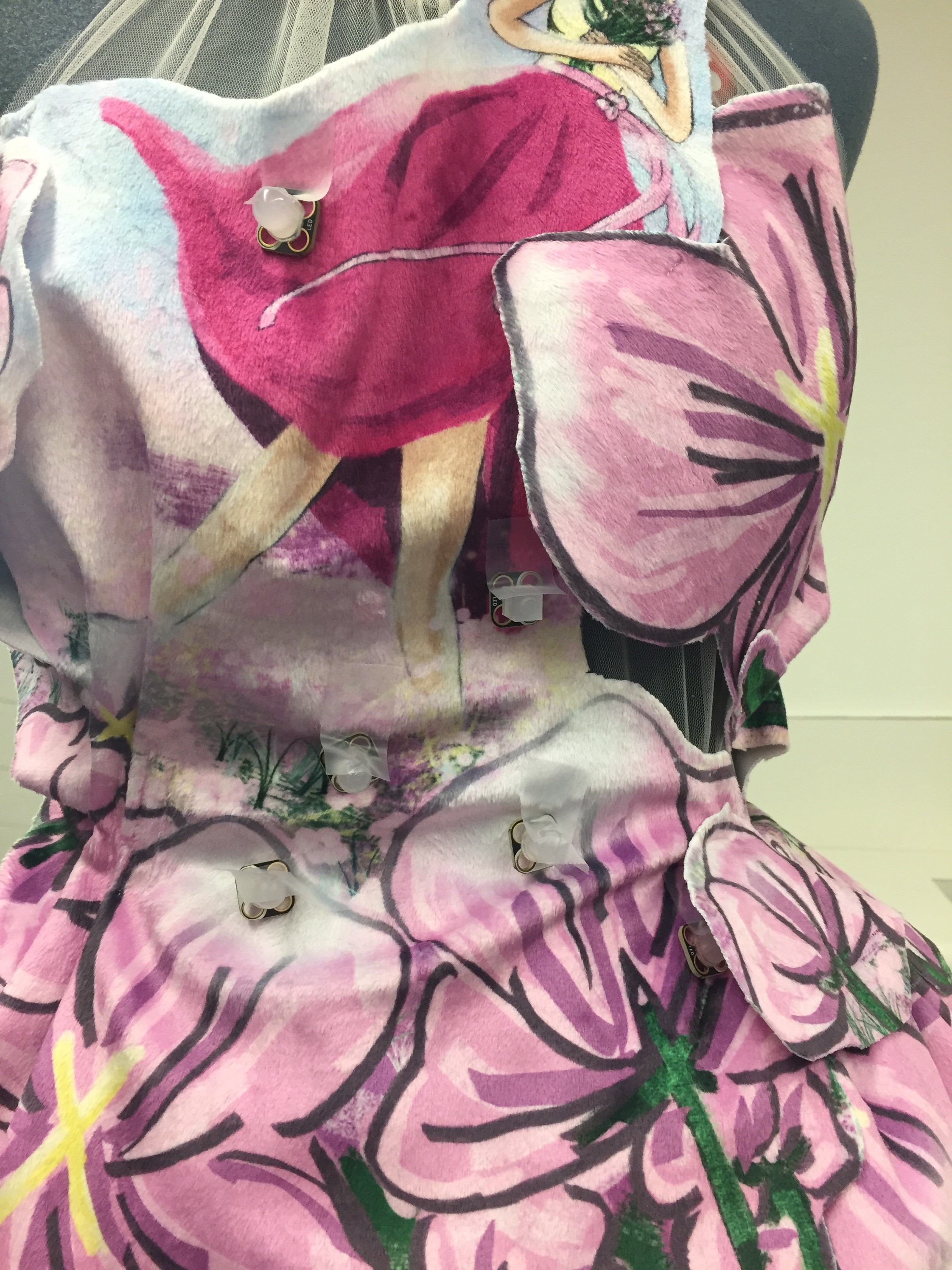 I taped the LEDs onto where I want them to be on based on the graphics. Then I mark the locations on a piece of paper.
I taped the LEDs onto where I want them to be on based on the graphics. Then I mark the locations on a piece of paper. 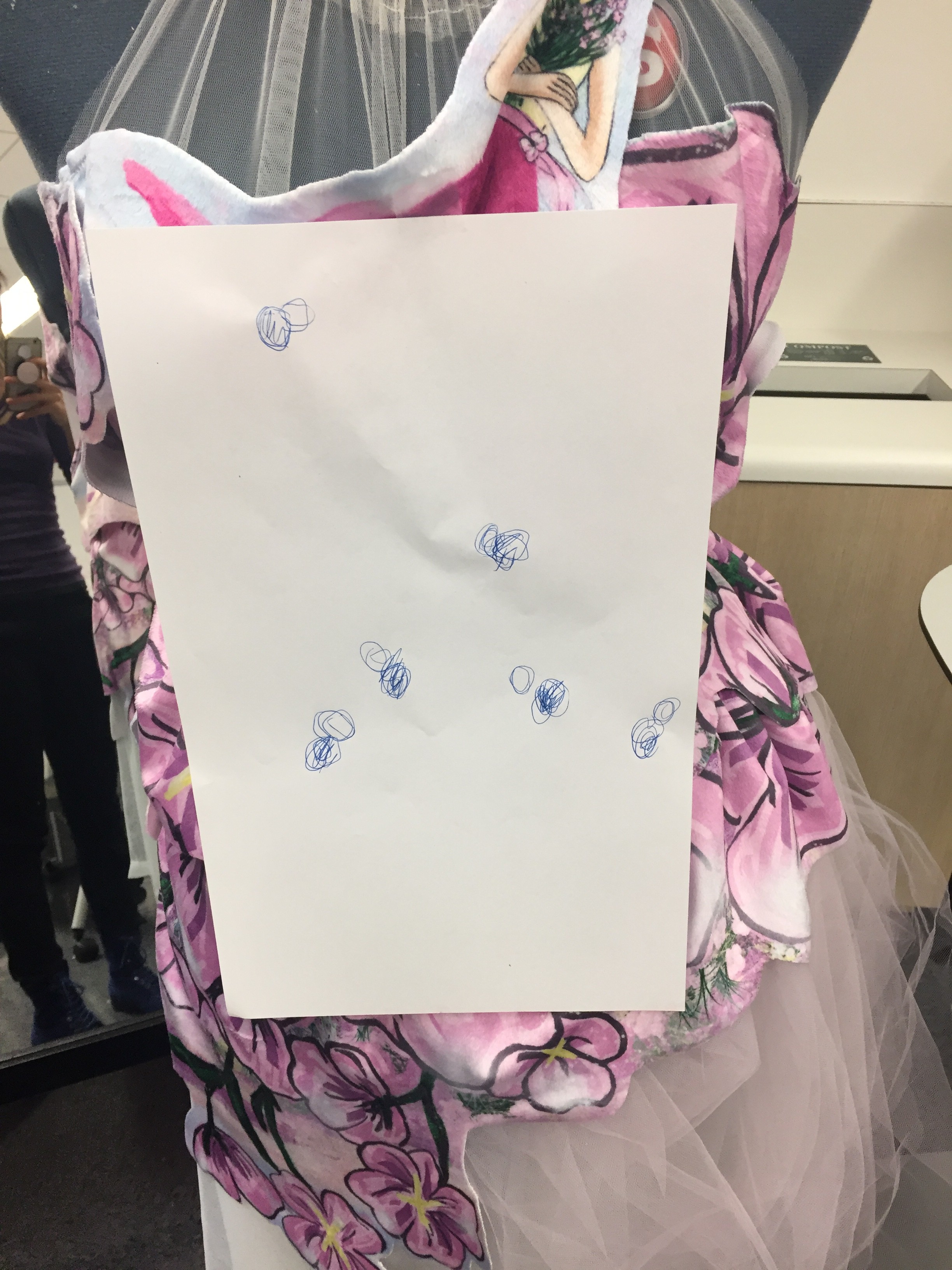
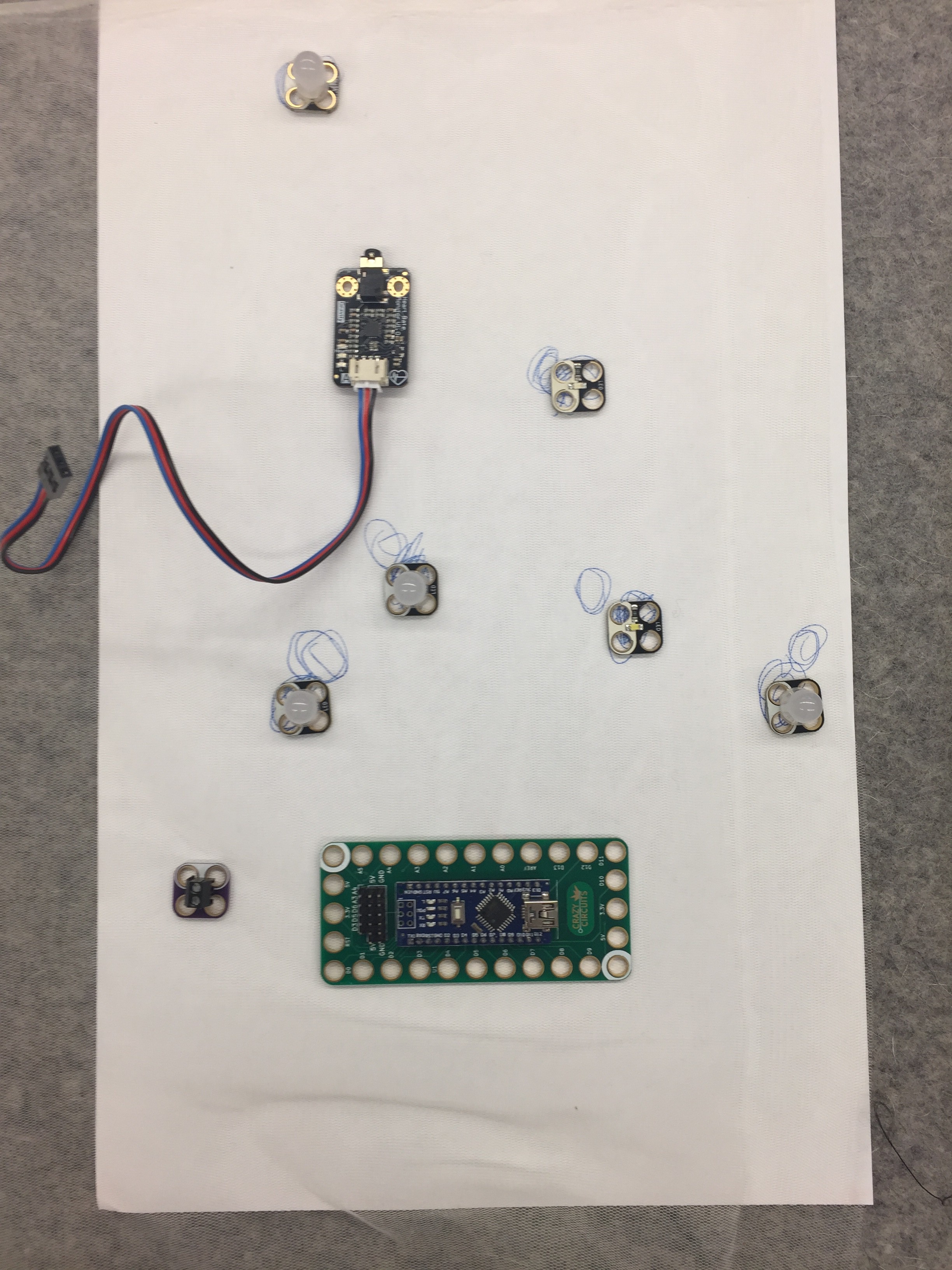
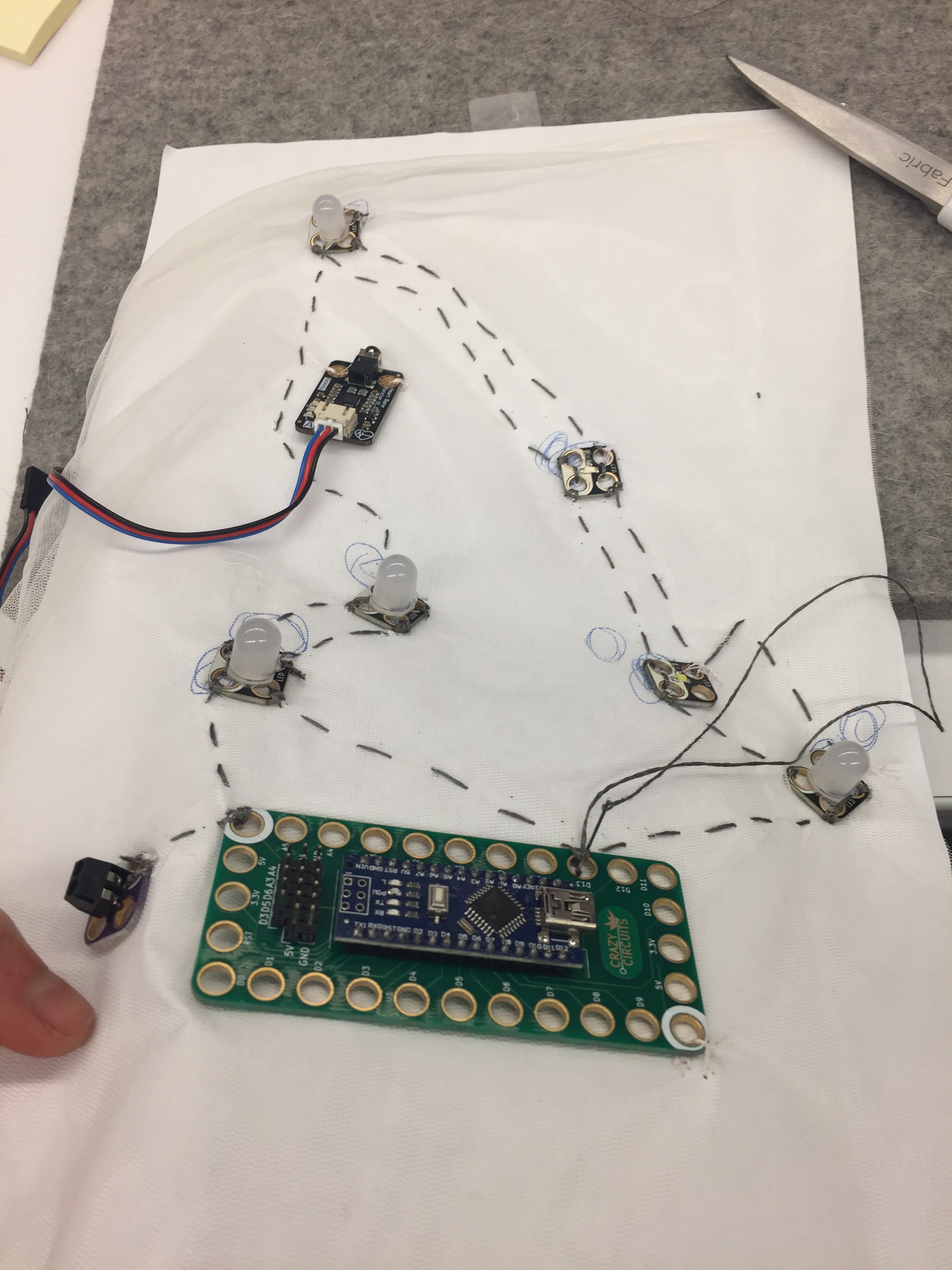
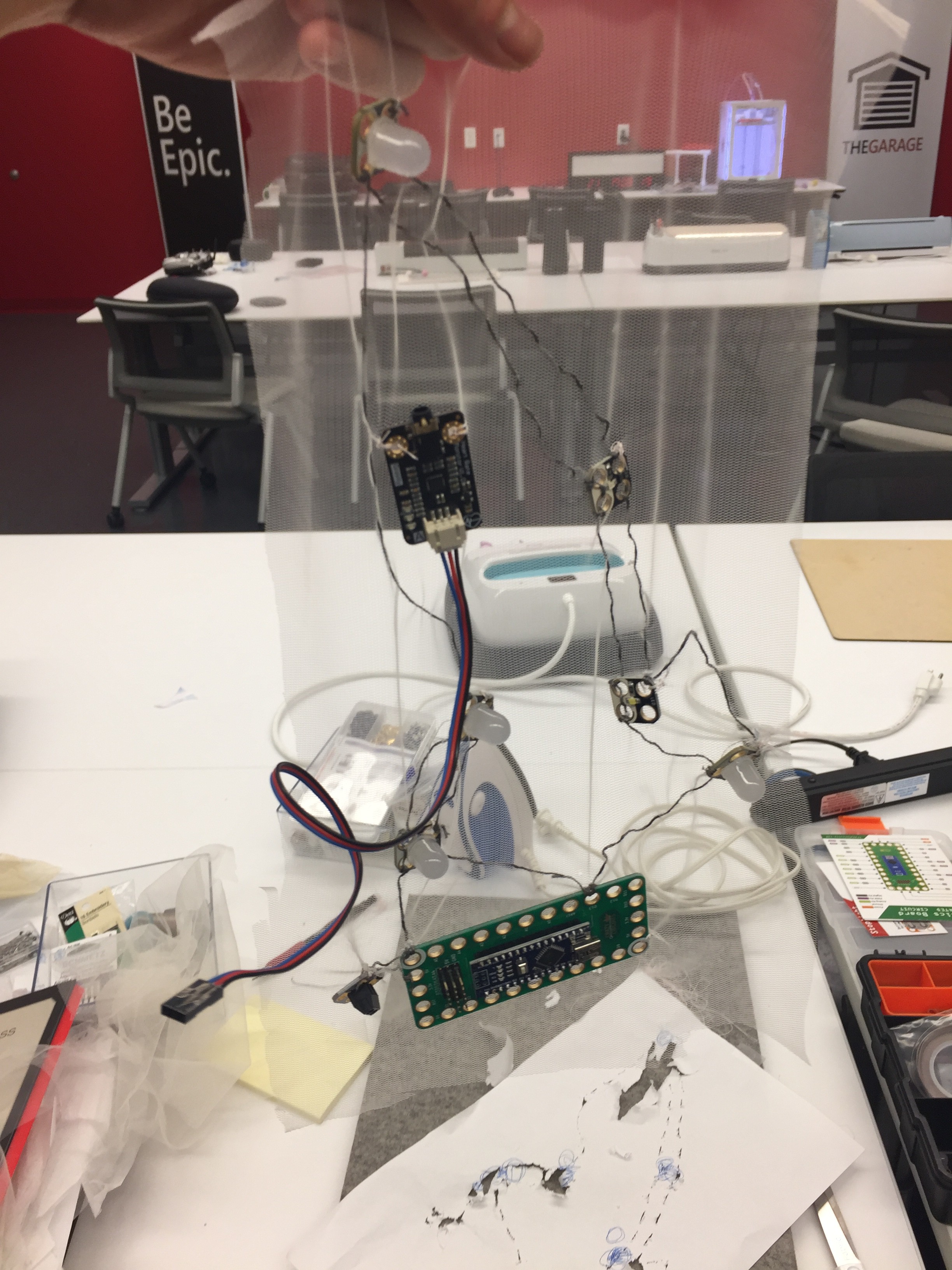
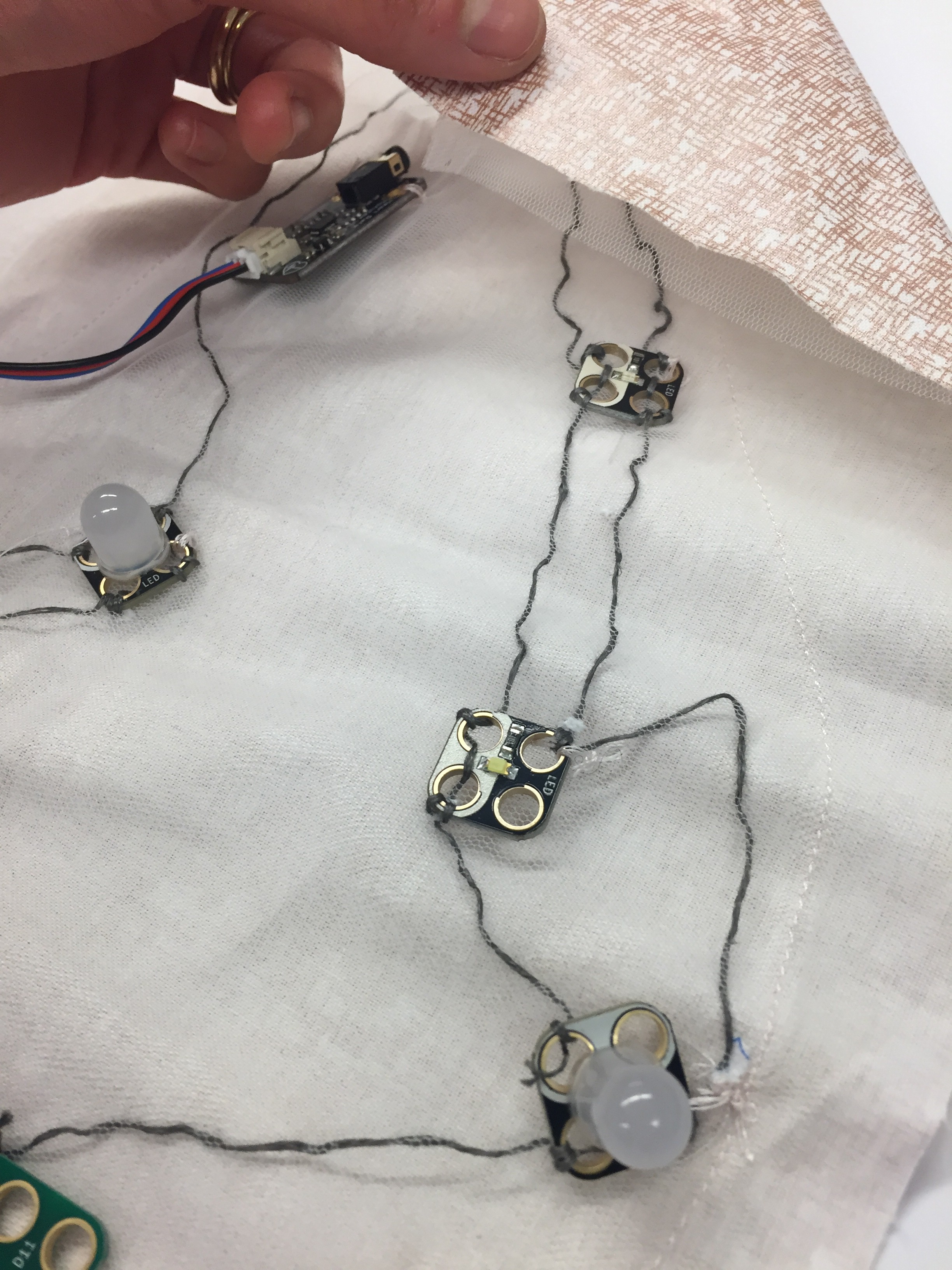
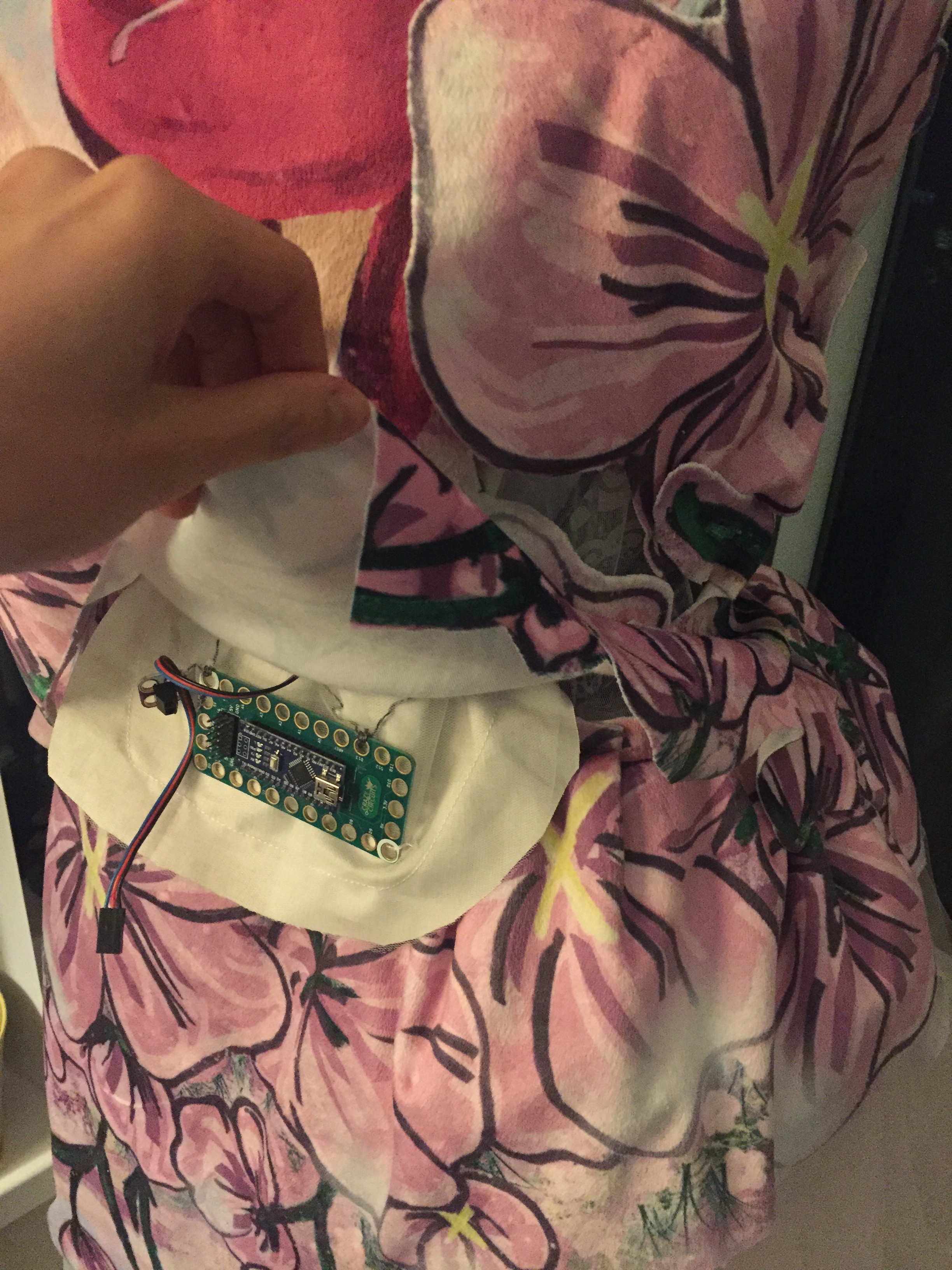
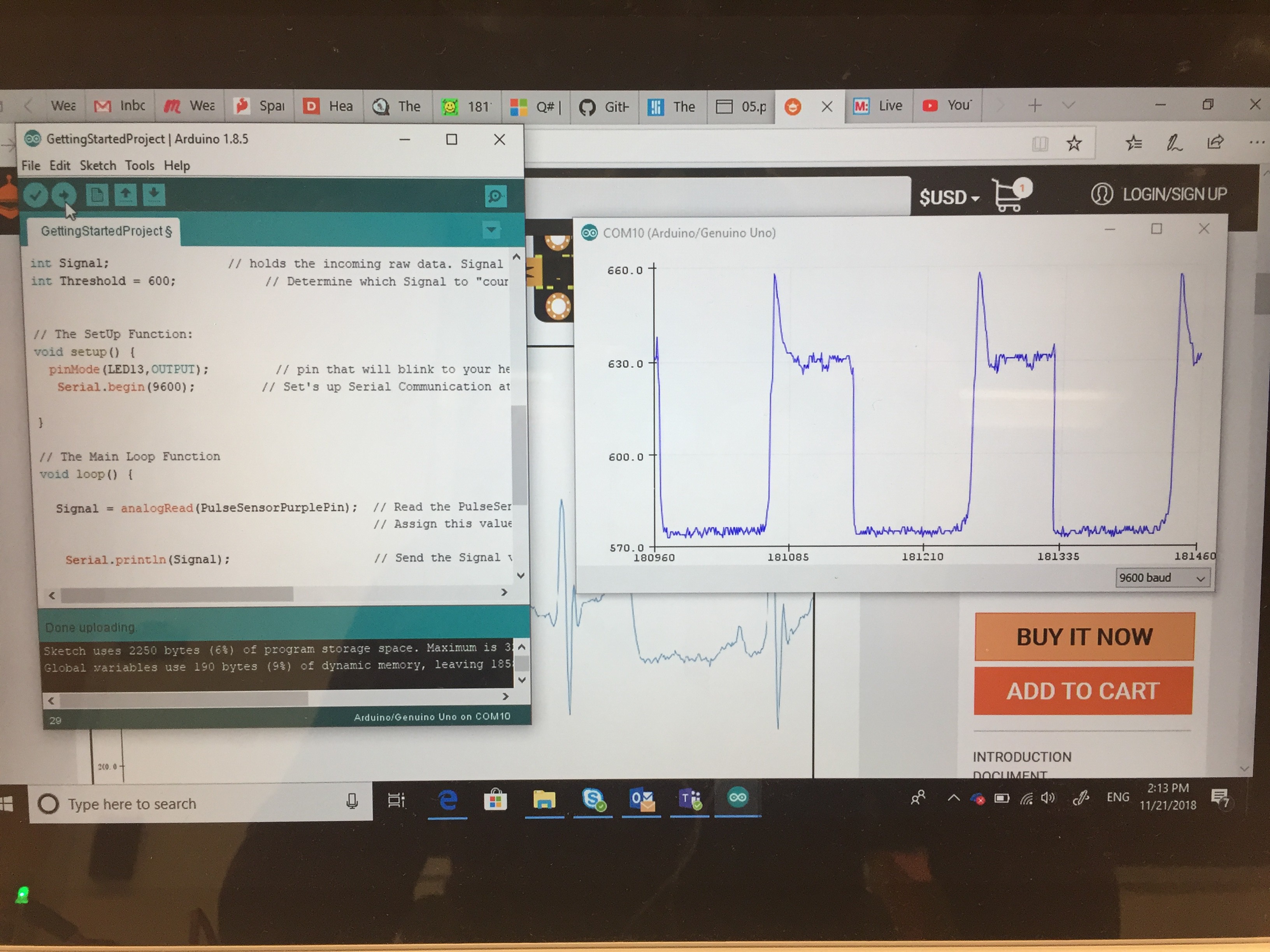
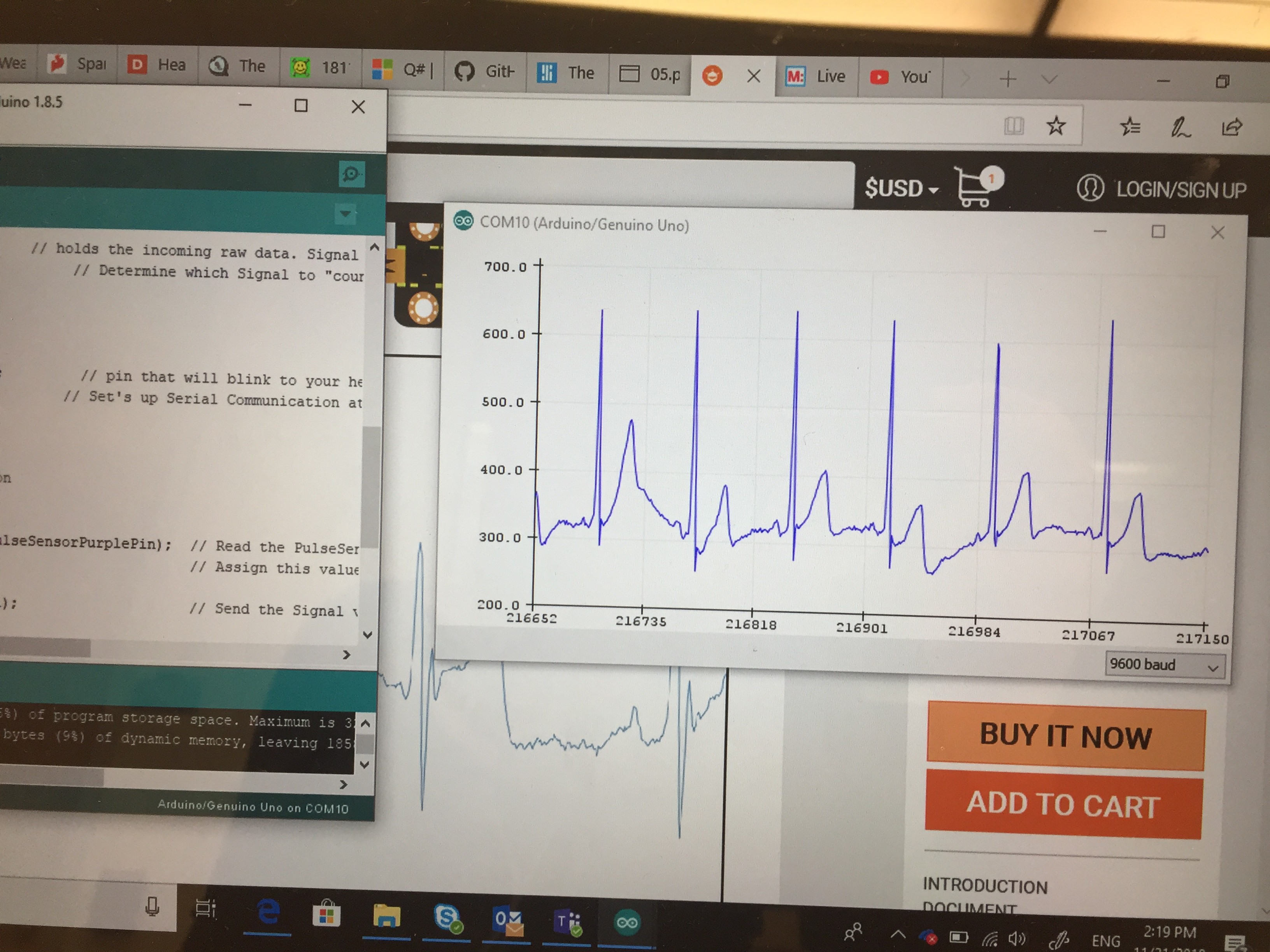
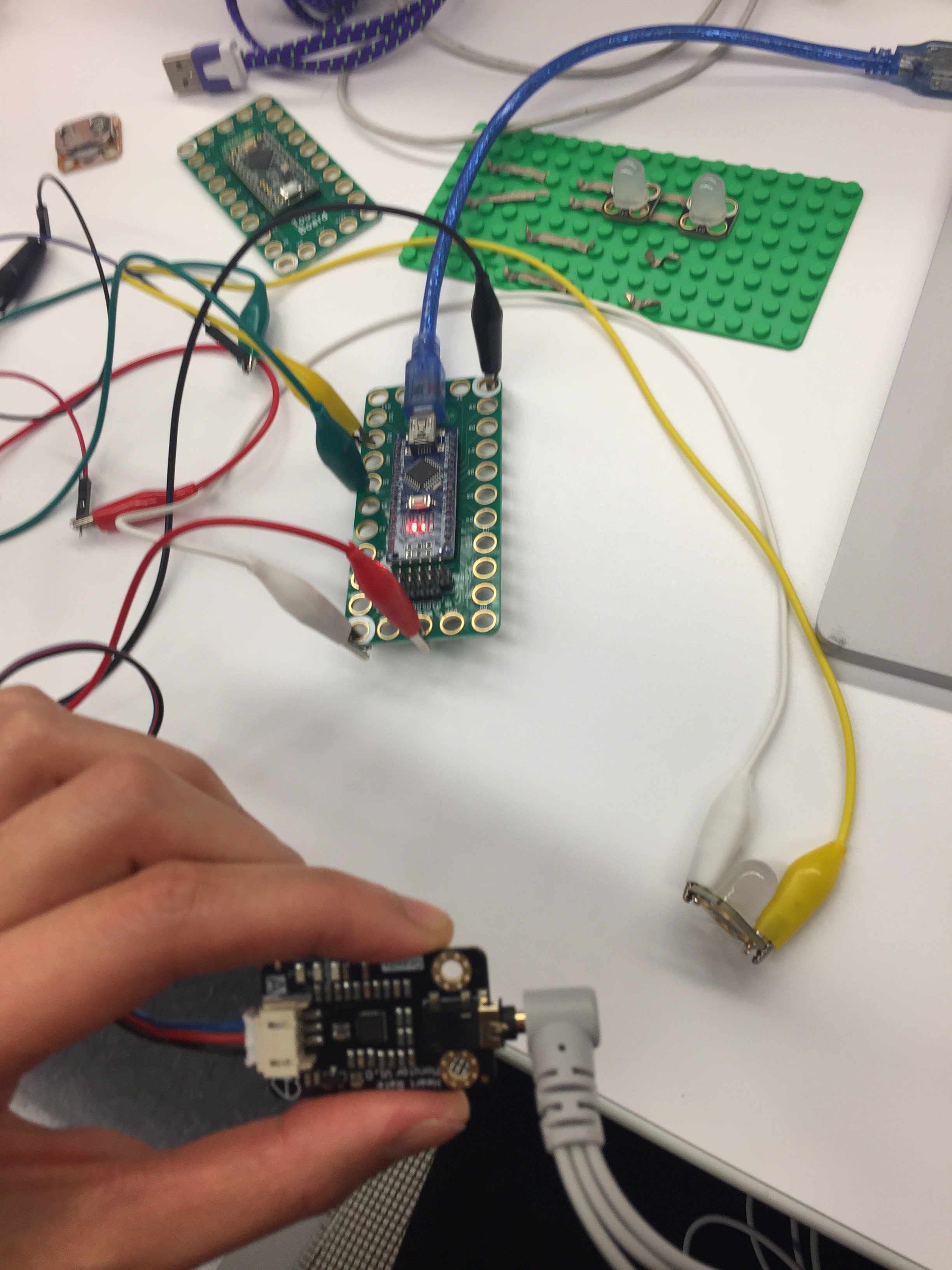
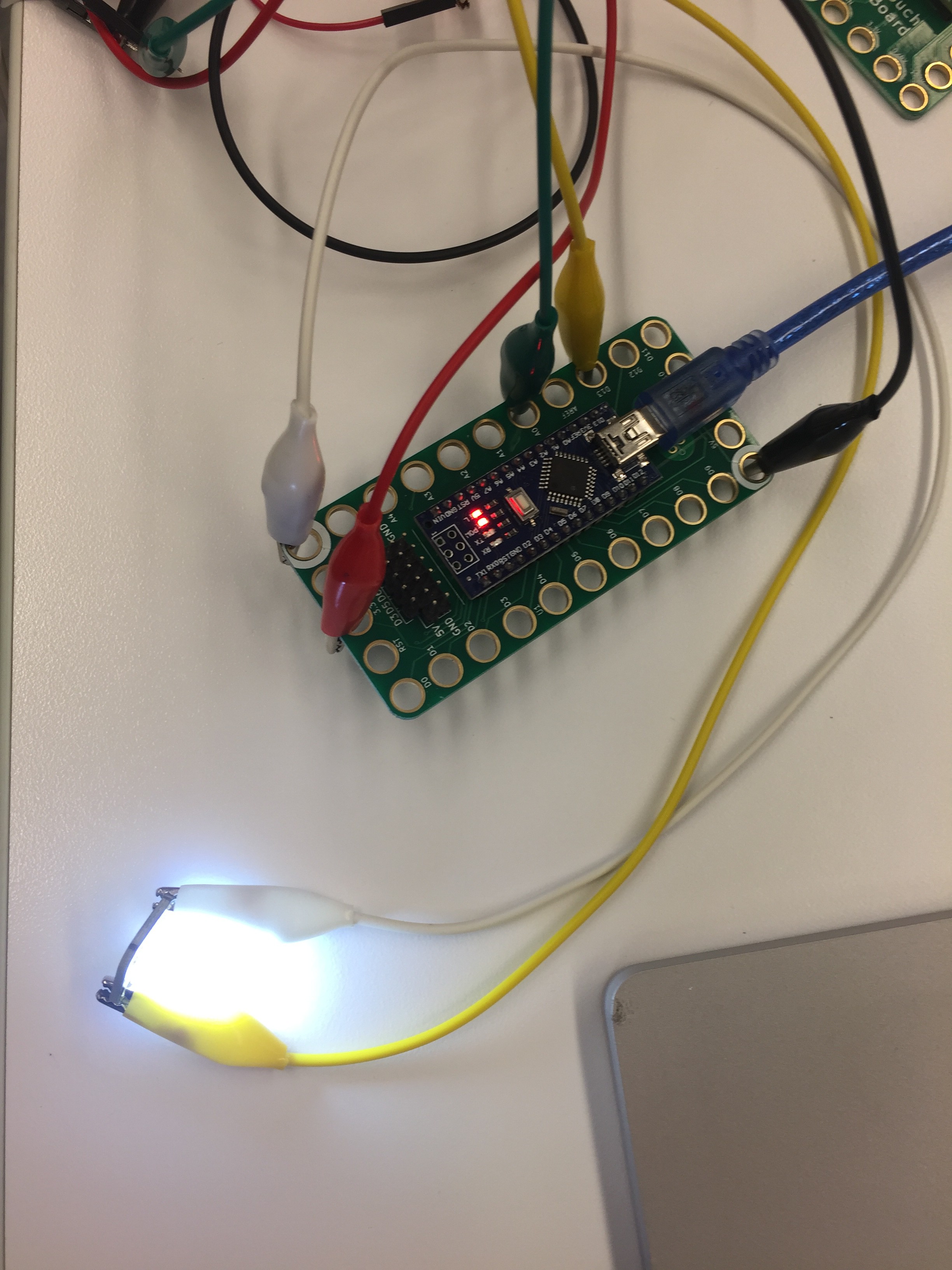
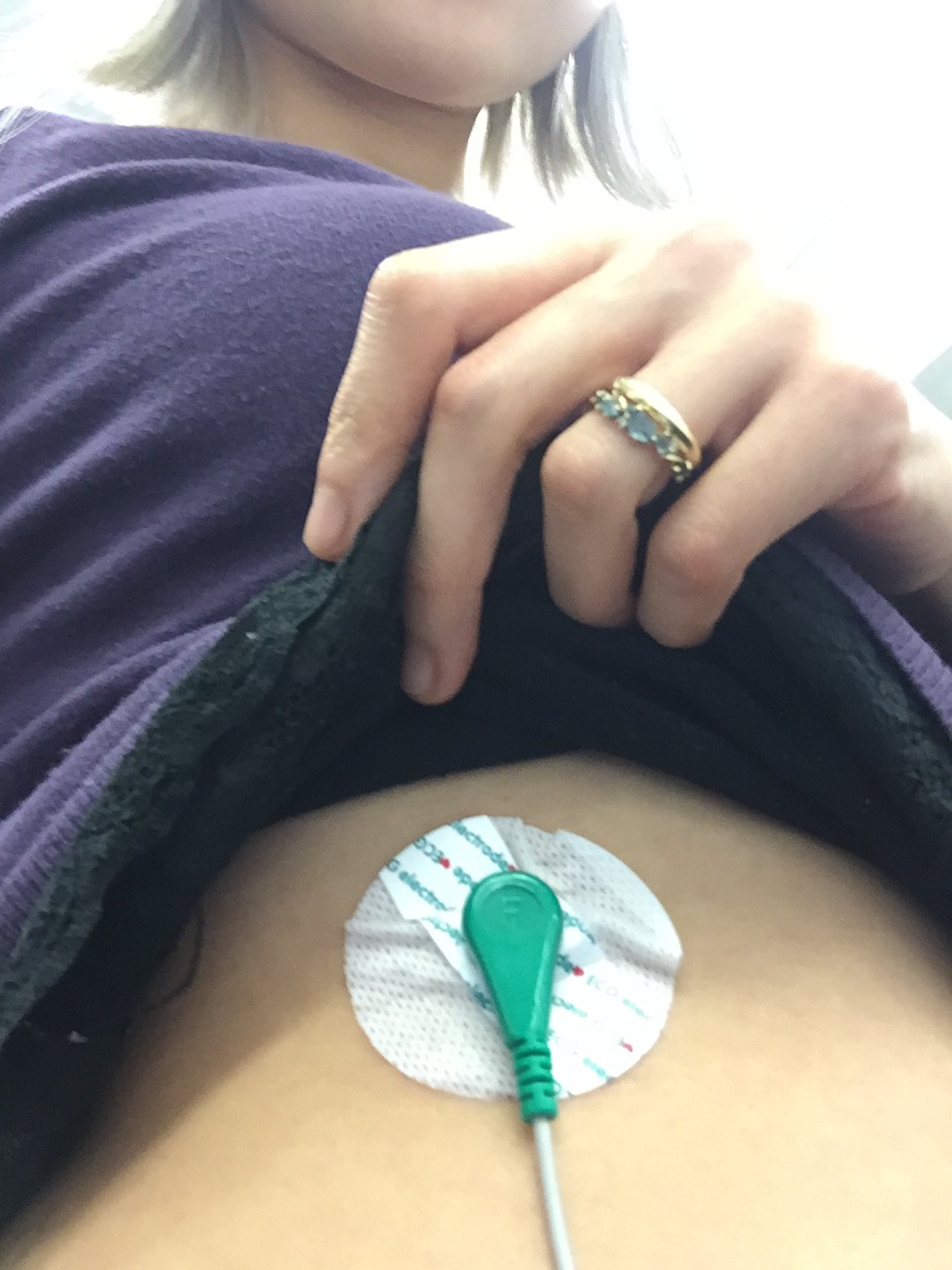
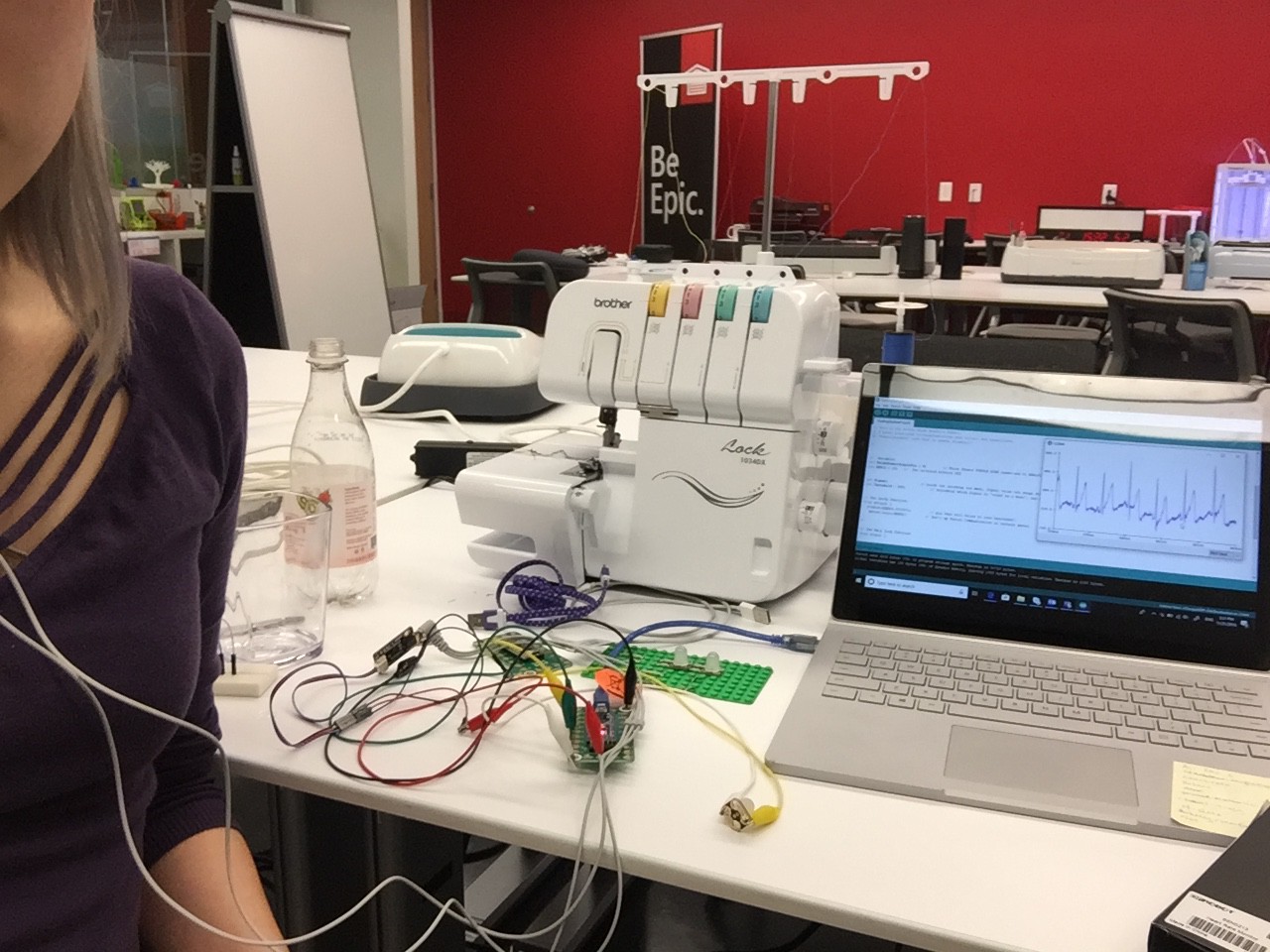
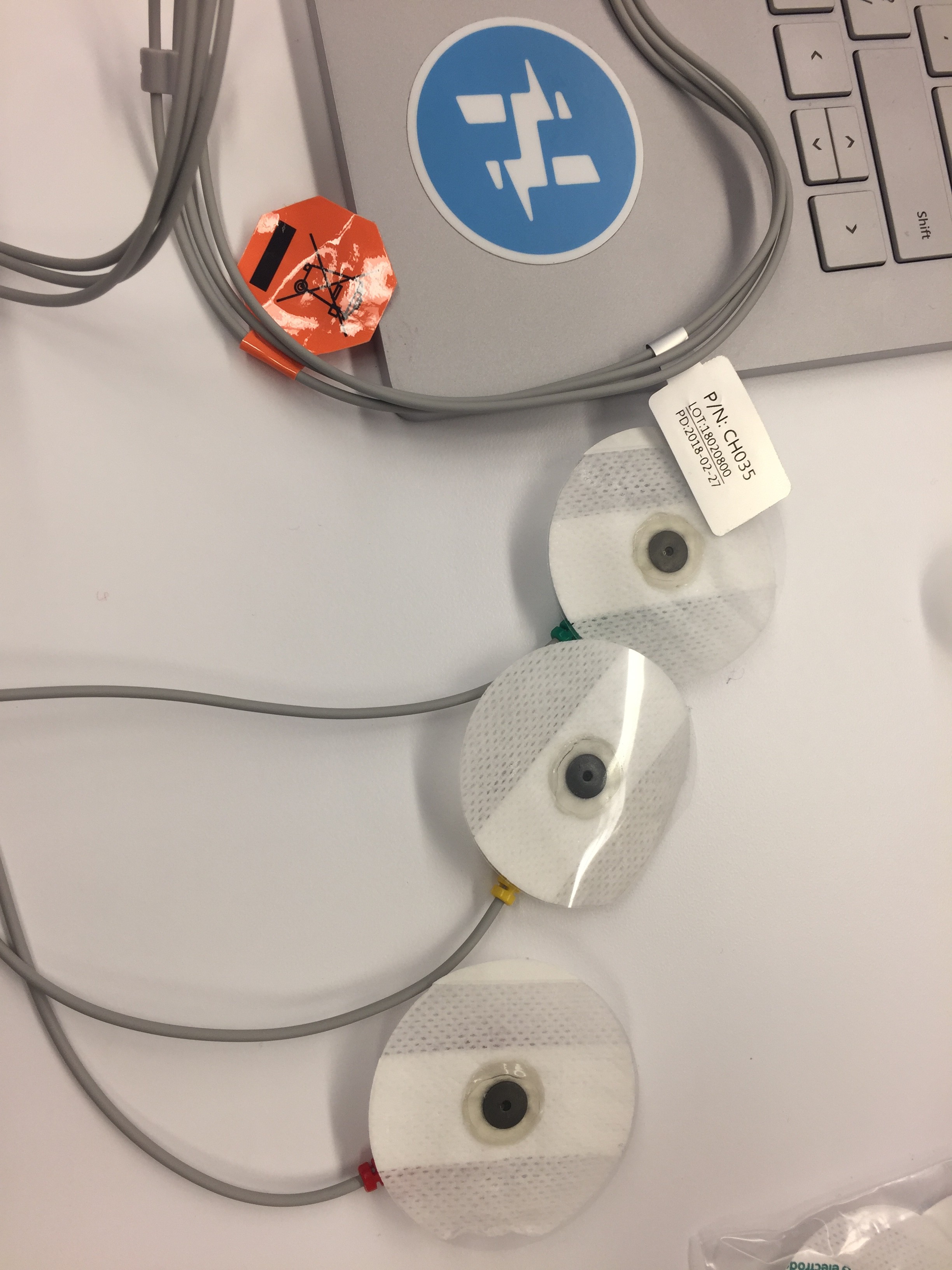
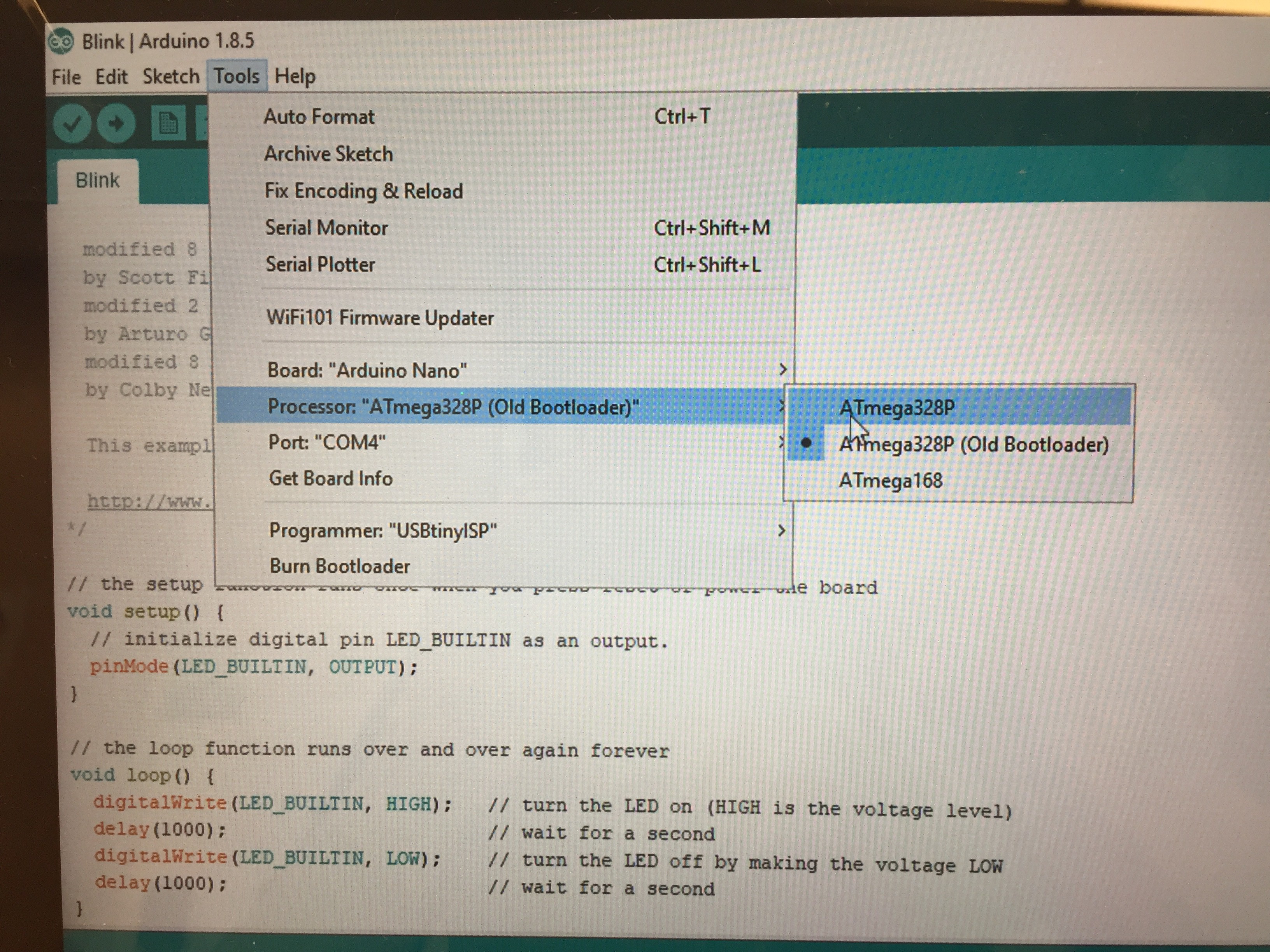
 I got some components from CrazyCircuits, including these large LEDs and coin ceil holders with large holes for sewing. They also have conductive tapes and a testing board, making the circuit test very easy.
I got some components from CrazyCircuits, including these large LEDs and coin ceil holders with large holes for sewing. They also have conductive tapes and a testing board, making the circuit test very easy. 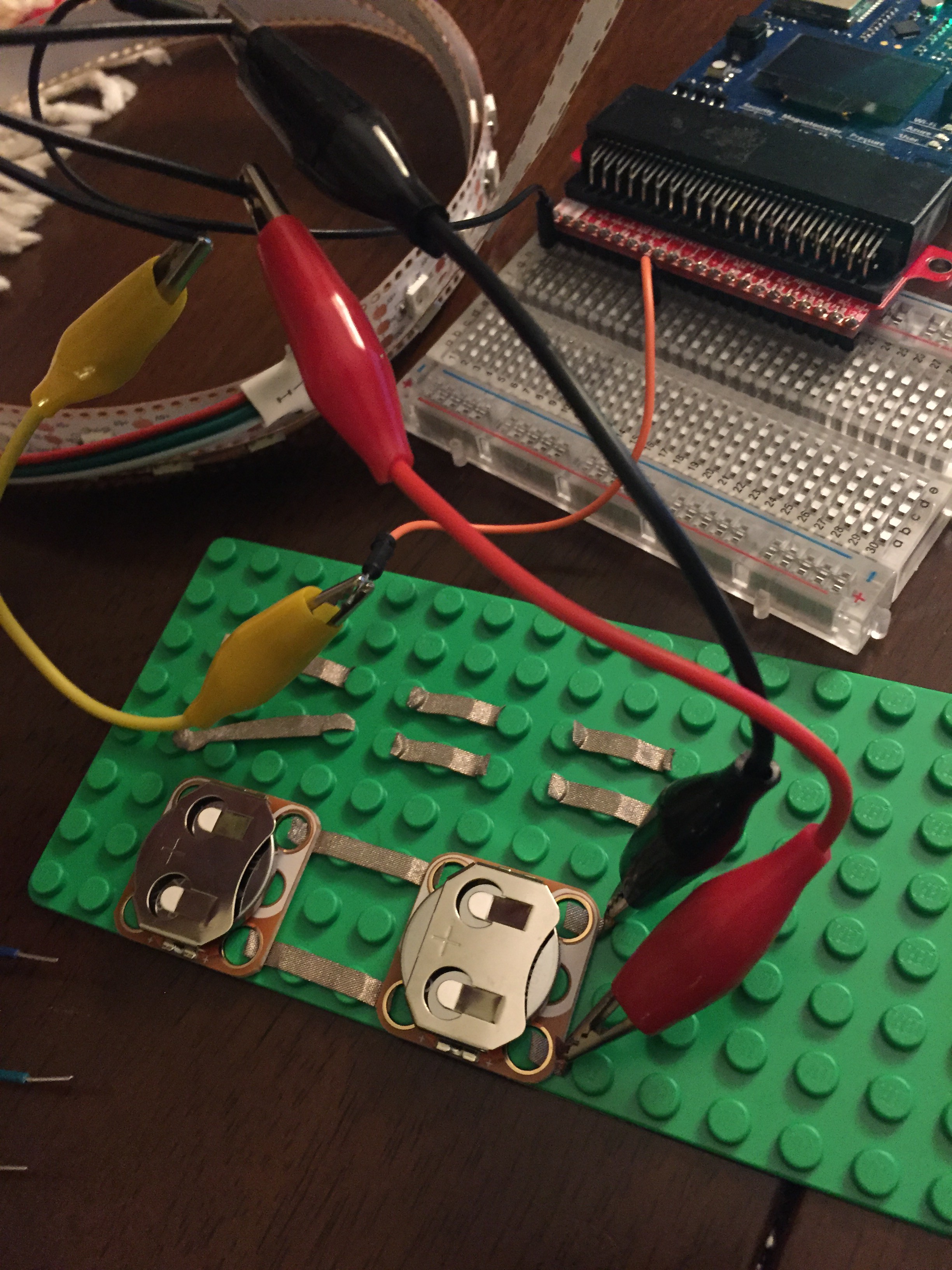 I even used them to test a different project I'm working on that needed an external power supply.
I even used them to test a different project I'm working on that needed an external power supply.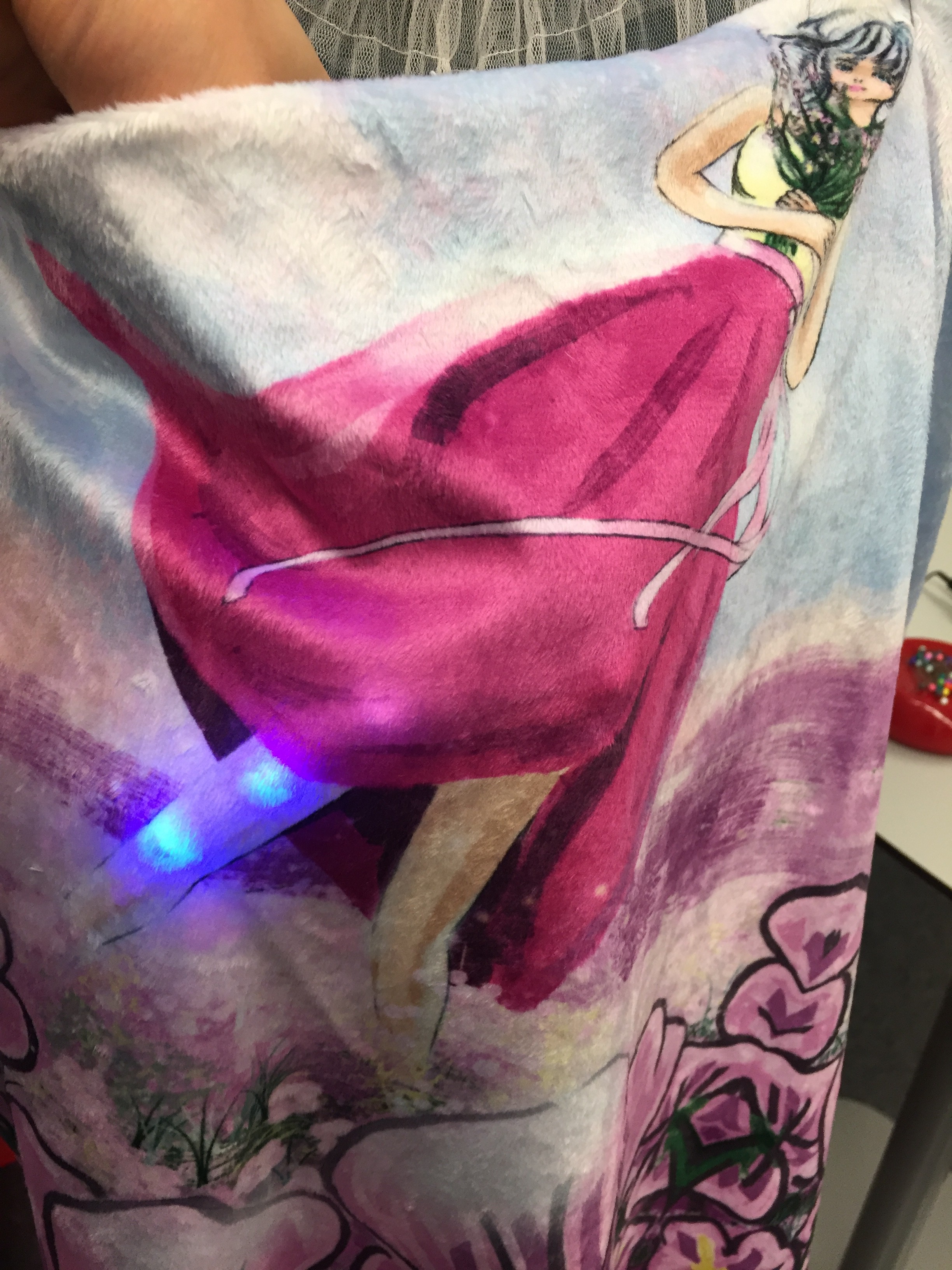
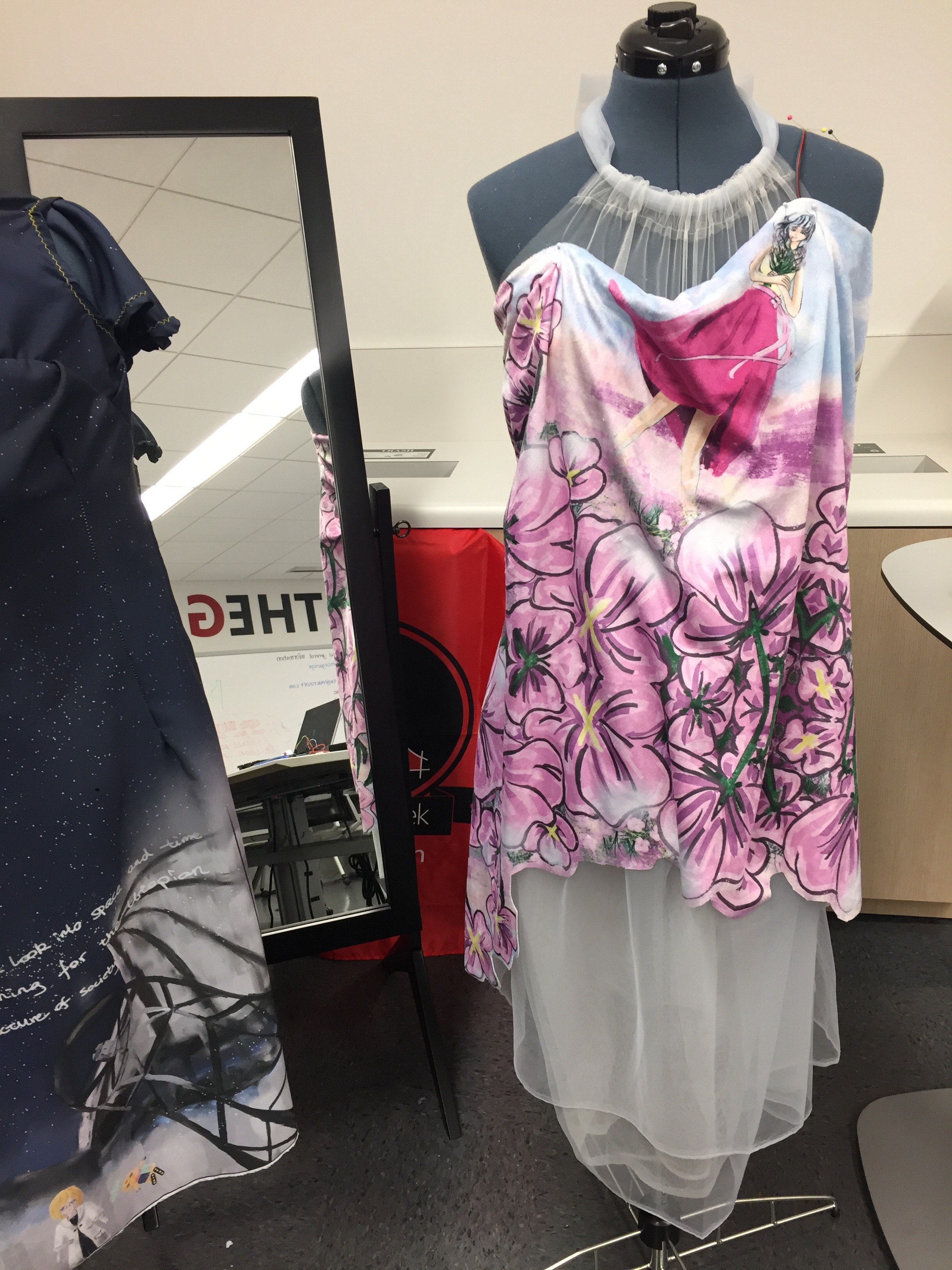 Now I need to design the placement of the graphics. I decided to cut the flowers and human figure out according to their shapes. Then stitch the parts together onto the tulle layer piece by piece.
Now I need to design the placement of the graphics. I decided to cut the flowers and human figure out according to their shapes. Then stitch the parts together onto the tulle layer piece by piece.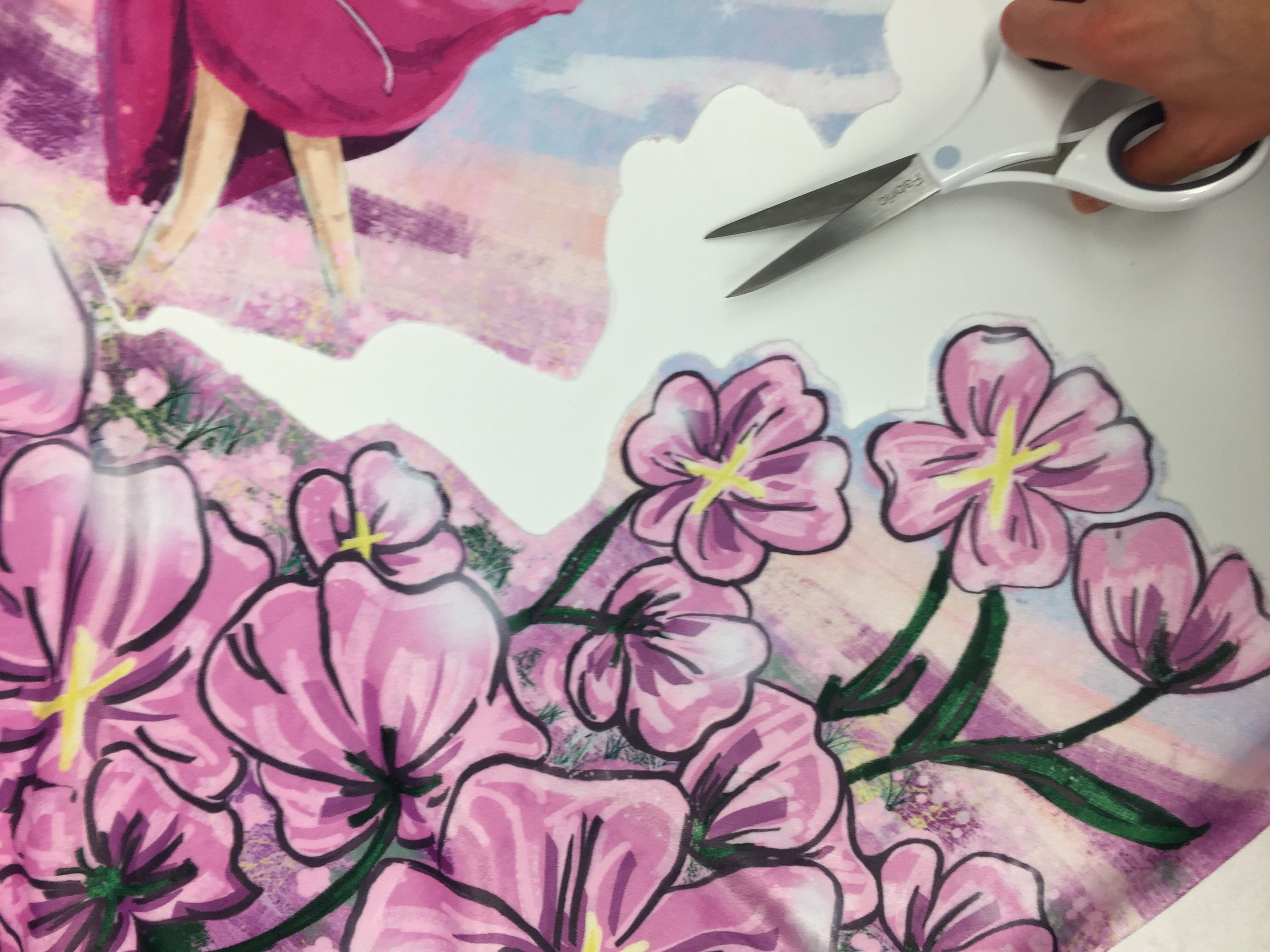
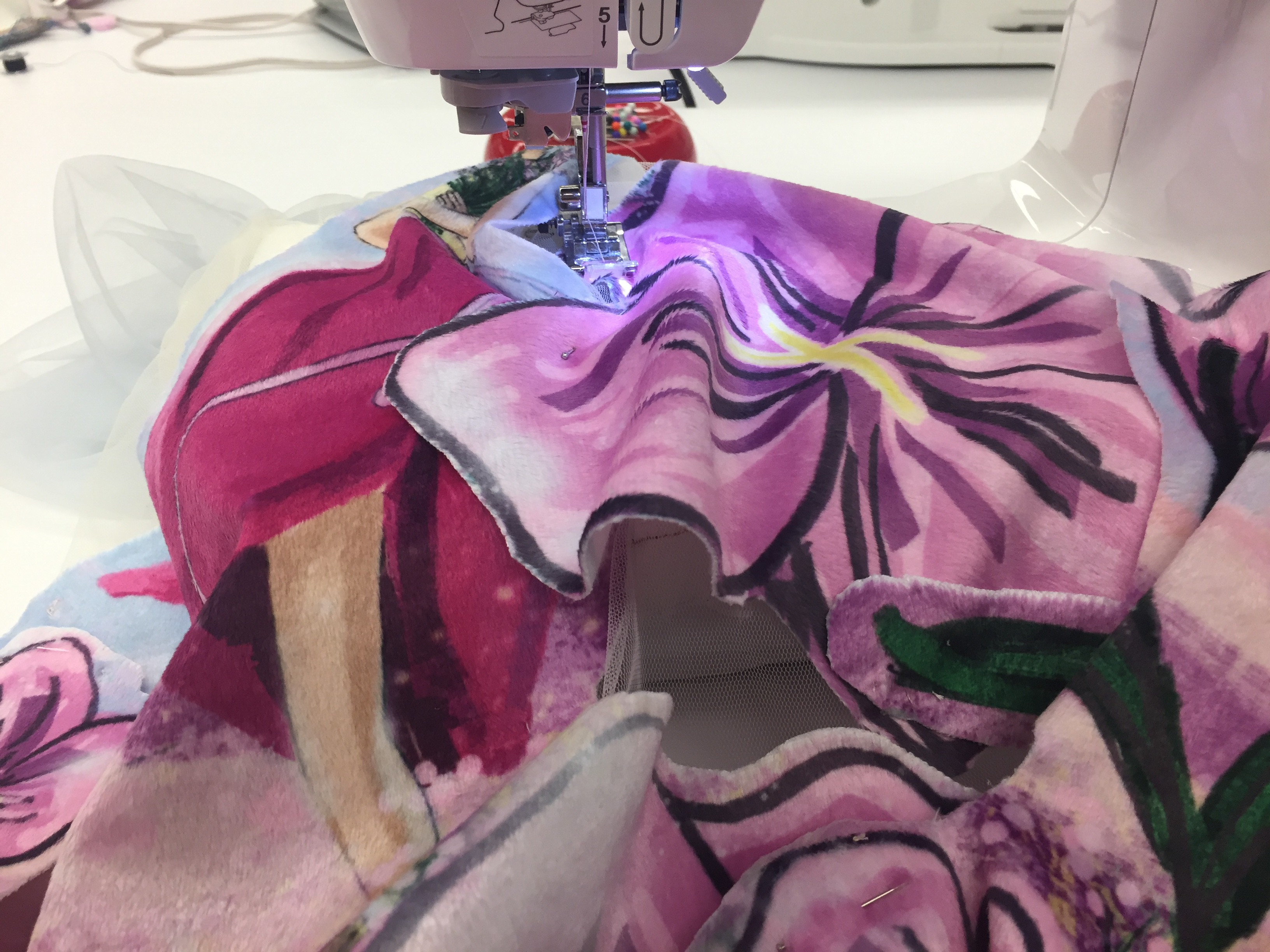 There's a lot of manual work.
There's a lot of manual work. 
